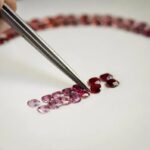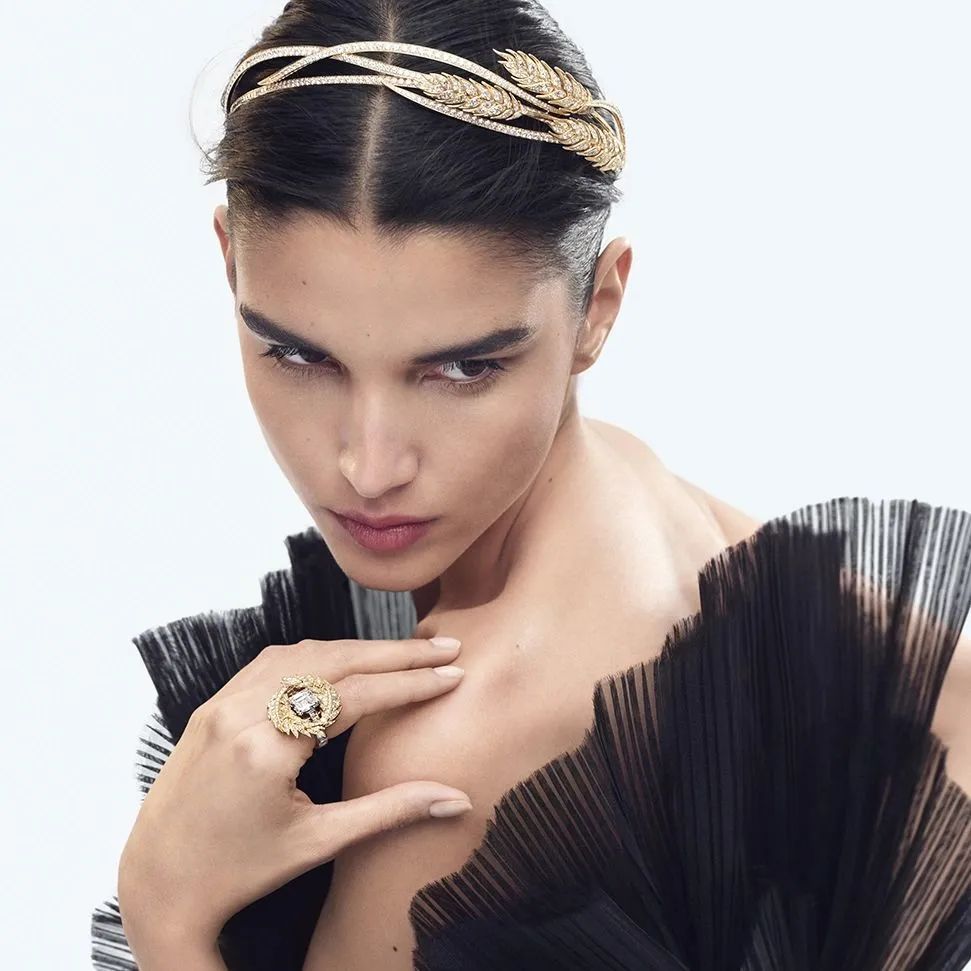
Recently, major jewelry brands have been hosting exhibitions, from Bulgari to Van Cleef & Arpels, and Buccellati. Why are they so keen on organizing these events? What exactly are they showcasing? In essence, these brands are “flaunting” their rich historical and cultural heritage, with most paying homage to their spiritual totems.
Indeed, almost every brand has chosen creatures from nature as their spiritual totems. Only these can achieve a soul connection with all collectors, becoming treasures for generation after generation, and evolving into classic symbols of the brand.
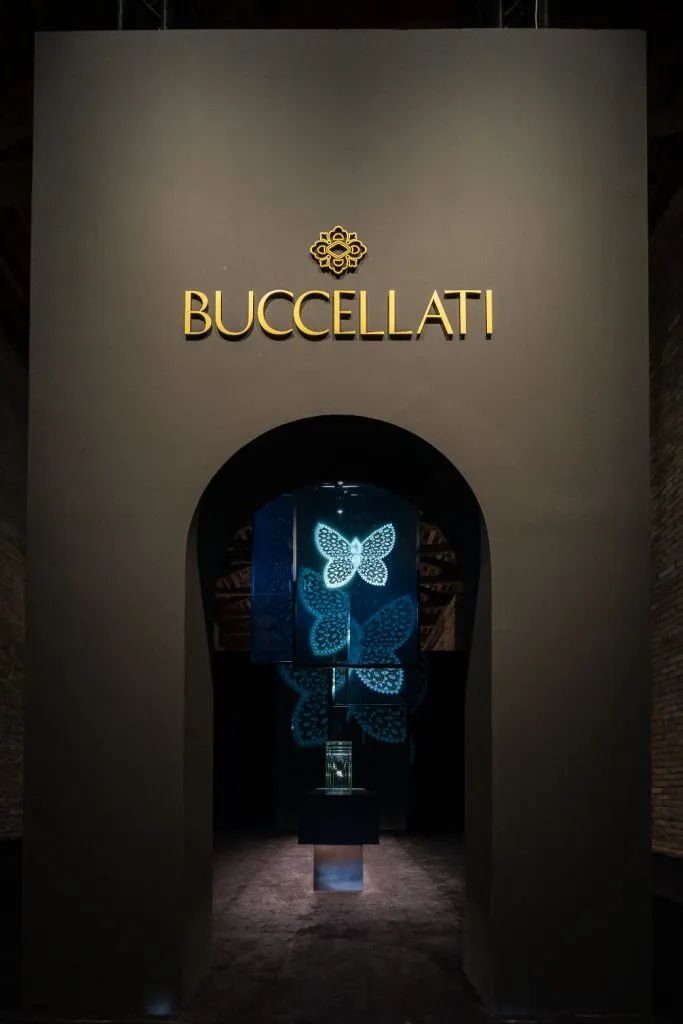
The Prince of Goldsmiths Exhibition
Why not open your jewelry box and see if your jewelry totem belongs to the active animal kingdom or the embracing plant world?
Many of you have likely taken the popular MBTI test and know whether you’re an “E” (Extrovert) or “I” (Introvert) person. As representatives of vibrant energy, “E” people naturally gravitate towards animal totems. These social butterflies can’t resist the charm of various “cute creatures.”
Think about the iconic figures in jewelry history who favored animal totems: the Duchess of Windsor, Elizabeth Taylor, Coco Chanel – you don’t need a test to know they were “E” people. So, when you open your jewelry box, which animal totems might you find?
Bulgari’s Serpenti: Transformation
Appealing to: ENFP, ENTP
Bulgari’s spiritual totem is undoubtedly the serpent. They are currently hosting the “Serpenti: The Eternal Evolution of an Icon Exhibition” in Beijing, showcasing the historical evolution of the Serpenti. For Bulgari, the serpent totem is fascinating because while it exists in various cultures, interpretations differ.
In ancient Western civilizations like Egypt, Greece, and Rome, the snake symbolizes wisdom and rebirth. In the Bible, it represents temptation and knowledge. For Chinese culture, it symbolizes Fuxi and Nüwa, the mythical creators of civilization.
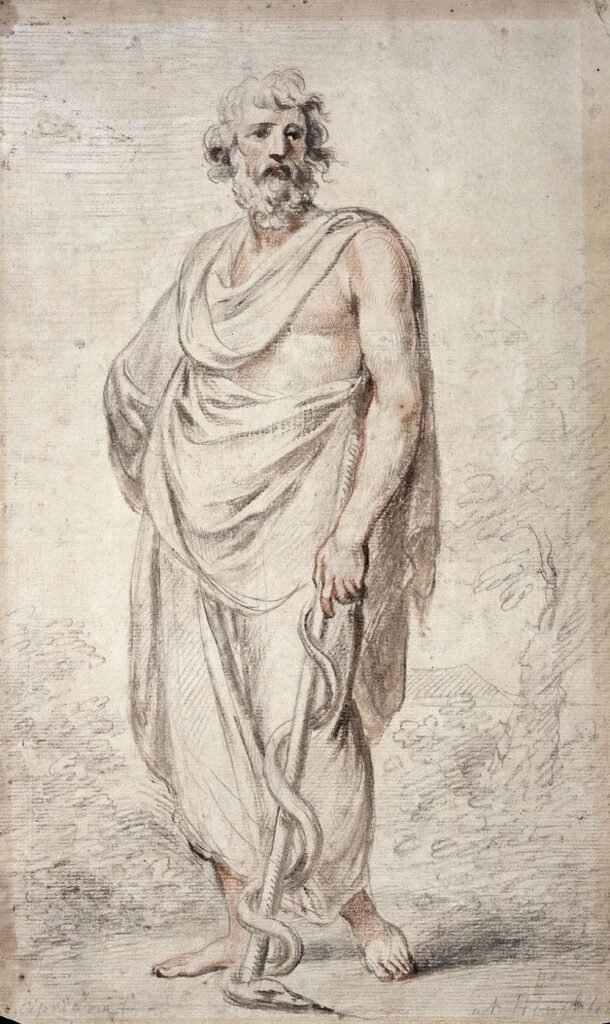
It is the symbol of Asclepius, the god of medicine

Which cultural image did Bulgari choose for their serpent? They opted for “transformation.” Indeed, the entire Serpenti collection has been evolving throughout its 70-plus years of existence. The first Serpenti, born in 1948, was abstract. Bulgari boldly applied the industrial Tubogas technique to jewelry design for the first time, creating a square-dial wristwatch that coiled around the wrist.
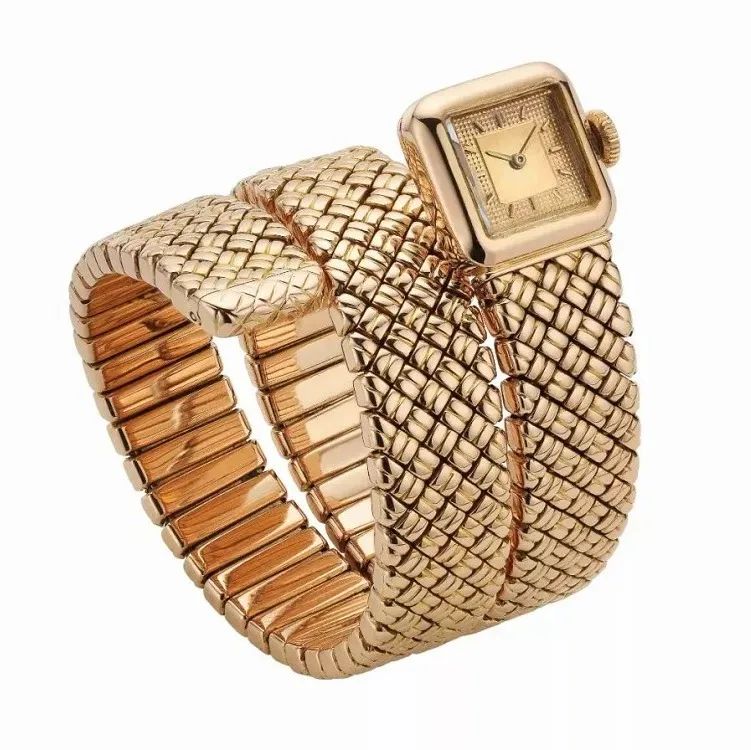
The first Serpenti bracelet watch
Created in 1957, now a private collection piece
It then began to transform towards a more figurative design, starting with the snake’s head. In the 1950s, Serpenti wristwatches even retained lifelike snake tongues—serving as switches for concealed watches.
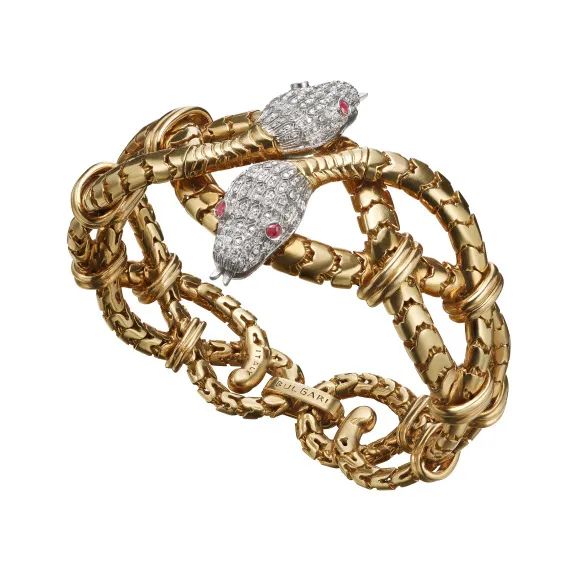
Serpenti vintage collection bracelet, 1950s
By the 1960s, Serpenti had a body covered in scales made of colorful gemstones. Bulgari showcased their expertise in colored gems, with scales in every imaginable hue. The serpent could coil around your neck, arm, or finger in various materials and poses.
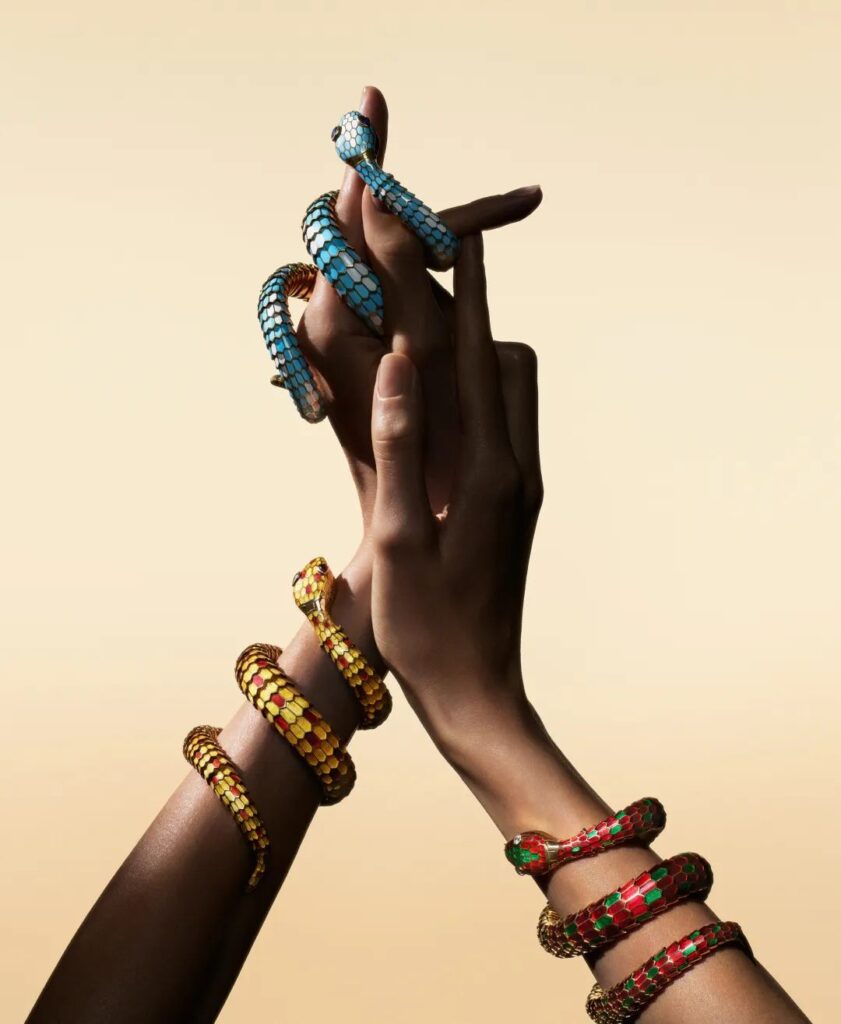
In the 1970s, when bold modernism was in vogue, Serpenti became abstract again, reviving the industrial Tubogas style. Watch dials adopted geometric shapes like squares, triangles, hexagons, and circles, embracing the era’s bold Retro Style.
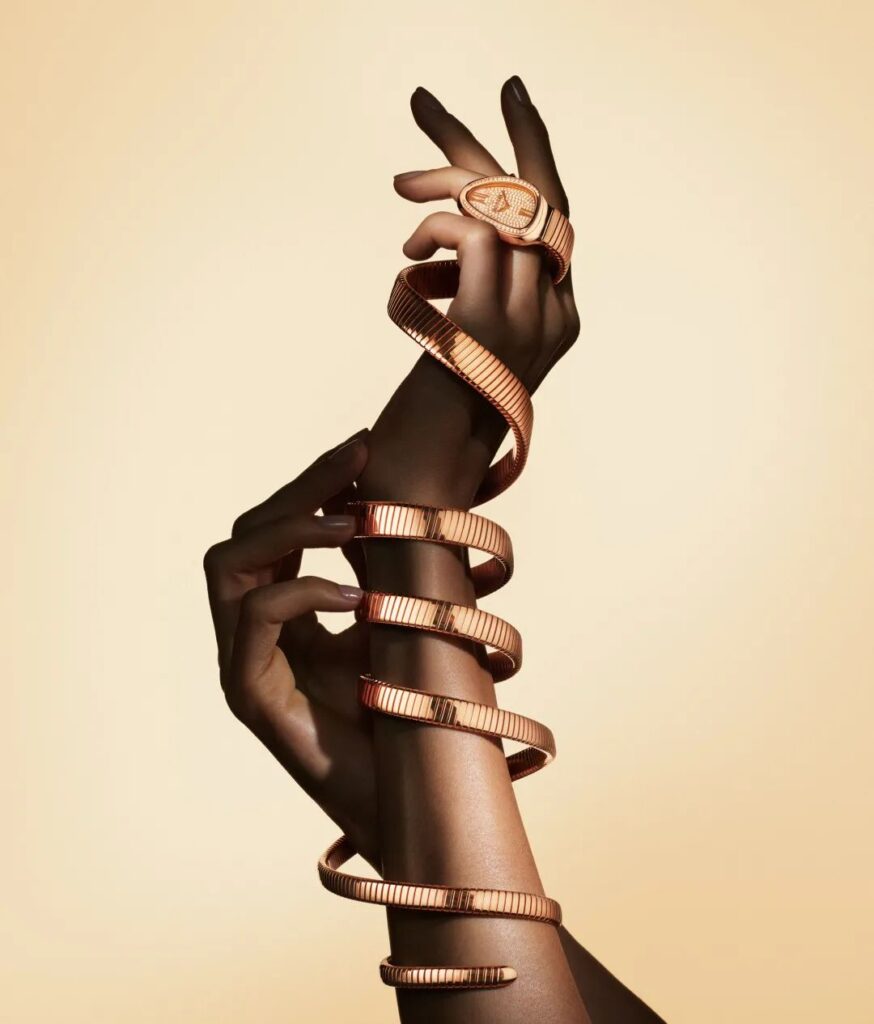
From the late 20th century to the present, Serpenti has become a staple in Bulgari’s high jewelry collections. It often revolves around stunning center stones, becoming the highlight of each season’s high jewelry pieces.
For instance, this year’s Serpenti Aeterna necklace, commemorating the brand’s 140th anniversary, features seven D-color, flawless pear-shaped diamonds totaling 140 carats, set in a sinuous, tail-biting serpent.
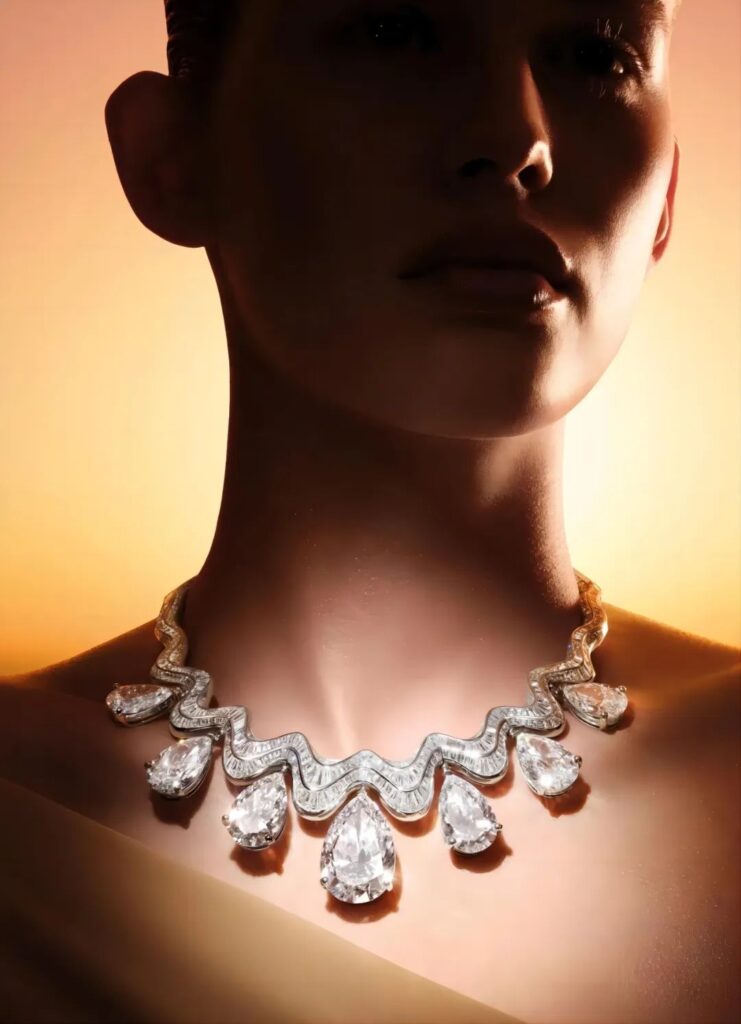
Aeterna High Jewelry Collection
Serpenti Aeterna Necklace
In the 21st century, Bulgari aimed to transform Serpenti for a younger audience. In 2016, they launched the Eyes on Me series, which retains only the snake’s head, emphasizing the mesmerizing power of its eyes. The body is reduced to a minimalist chain necklace for easier styling.
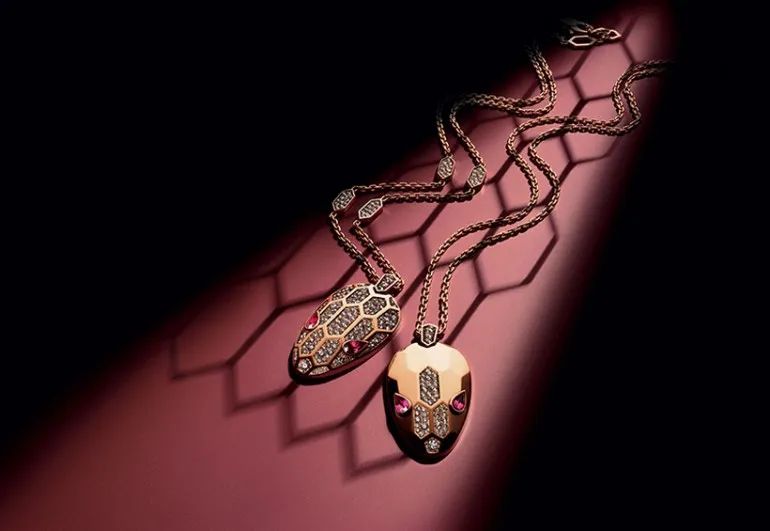
In 2017, Bulgari introduced the Viper series, combining minimalism with elements that outline the dangerous allure of the viper. It’s perfect for Gen Z’s pursuit of individuality, captivating and enticing.
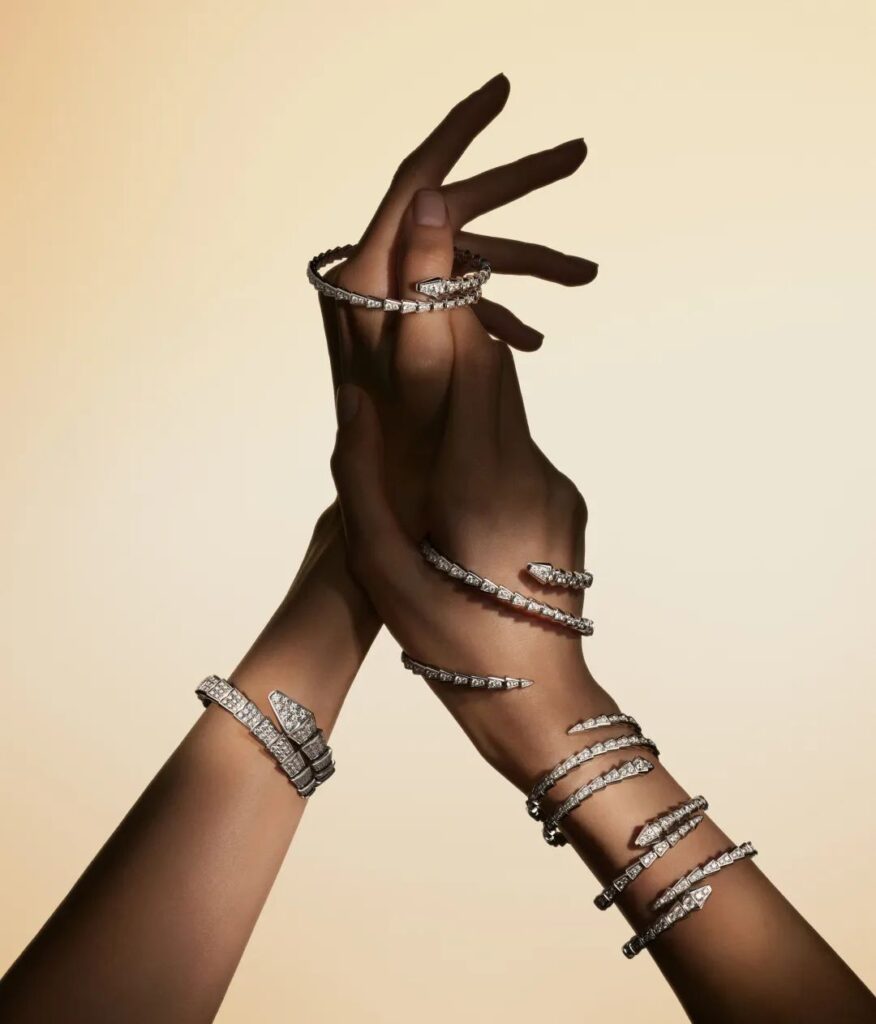
Cartier’s Panther: Independence
Appealing to: ESTP, ENTP
Cartier’s Panthère is equally renowned. Perhaps since designer Jeanne Toussaint’s time, Cartier’s spiritual totem has always been fierce, exuding a strong invasive beauty. The panther is dangerous, powerful, and independent—a perfect representation of the modern woman. Fashion icons of any era possess these qualities, as daring to be a fashion pioneer undoubtedly requires courage and determination far beyond their peers.
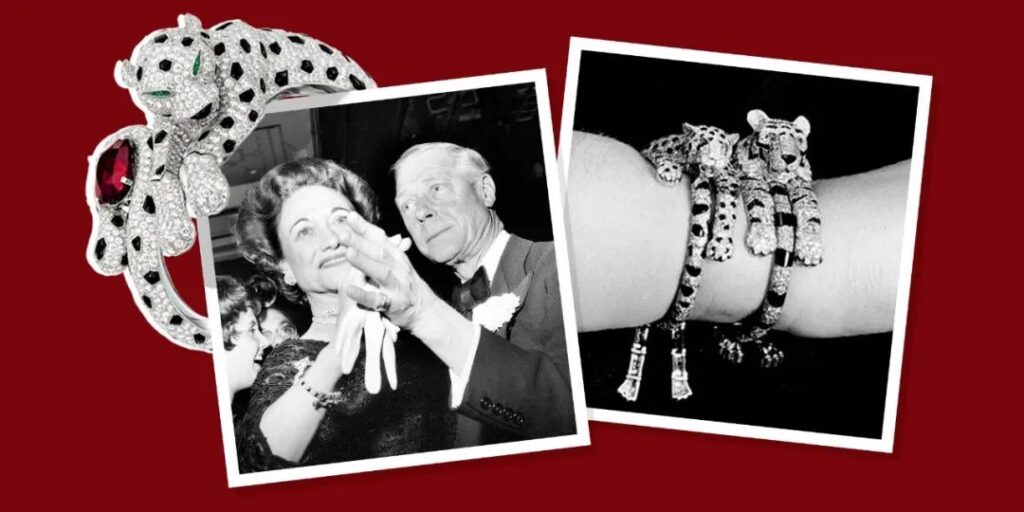
Cartier has made the panther their spiritual totem, showcasing this big cat’s unique charm in every era, capturing its various qualities—brave, lazy, alert… The panther has become a unique jewelry symbol and Cartier’s signature.
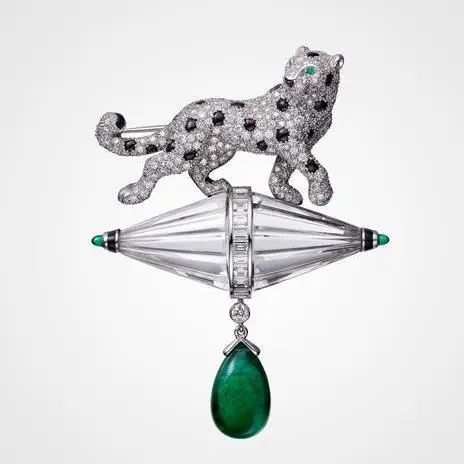
Art Deco style Panthère vintage brooch
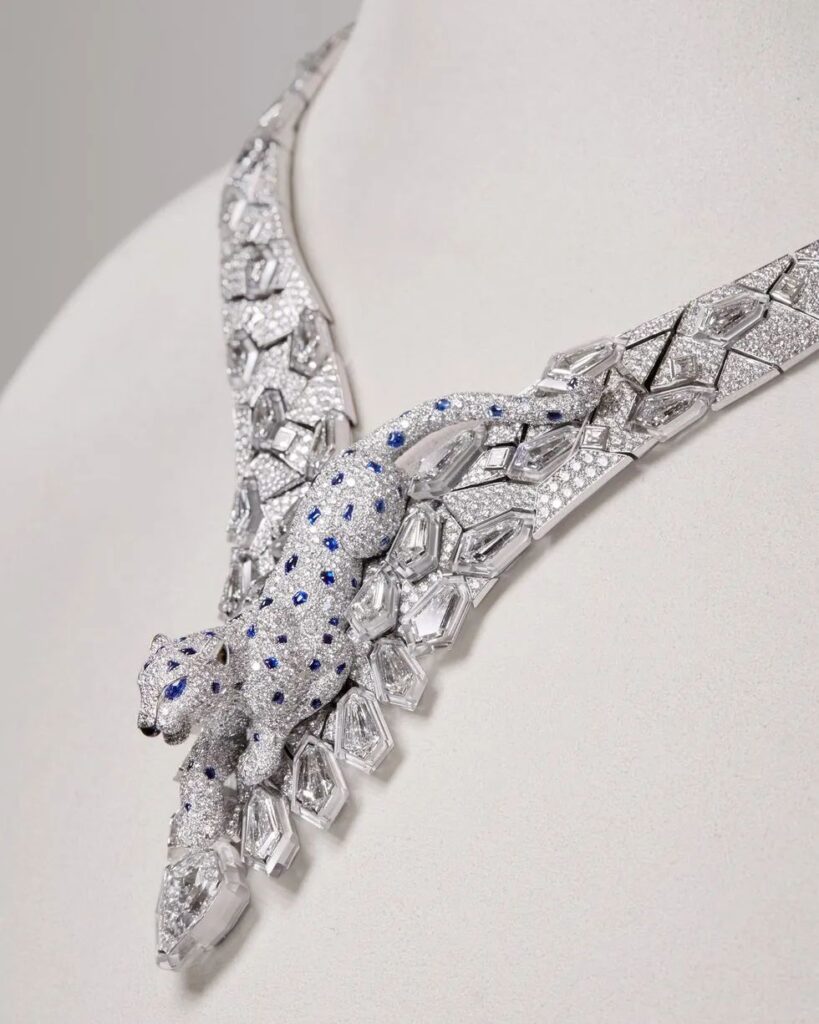
Nature Sauvage High Jewelry Collection
Panthère des Glaces Necklace
The panther has evolved from flat to three-dimensional and back to flat, from abstract to figurative in countless variations. Cartier even developed a special “fur setting” technique to highlight the panther’s spots, striving for lifelike realism.
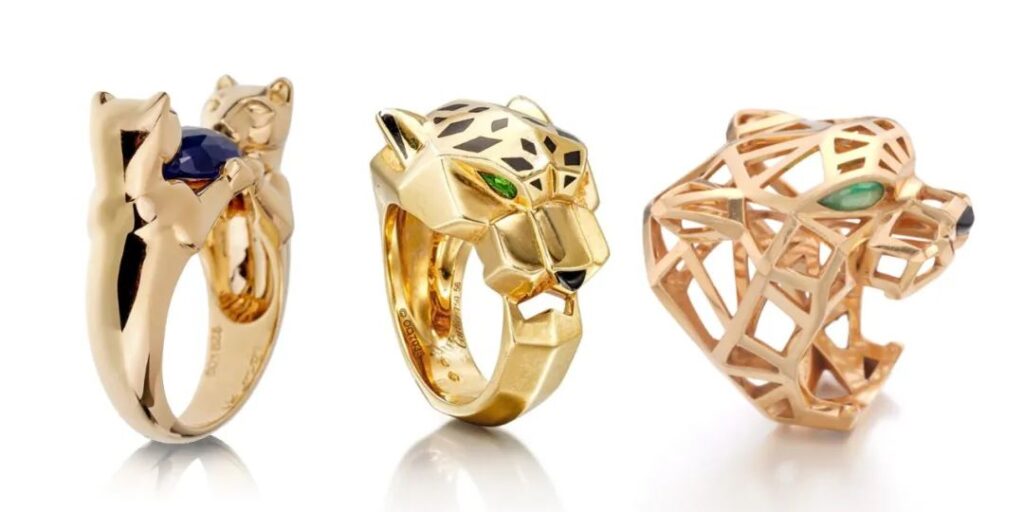
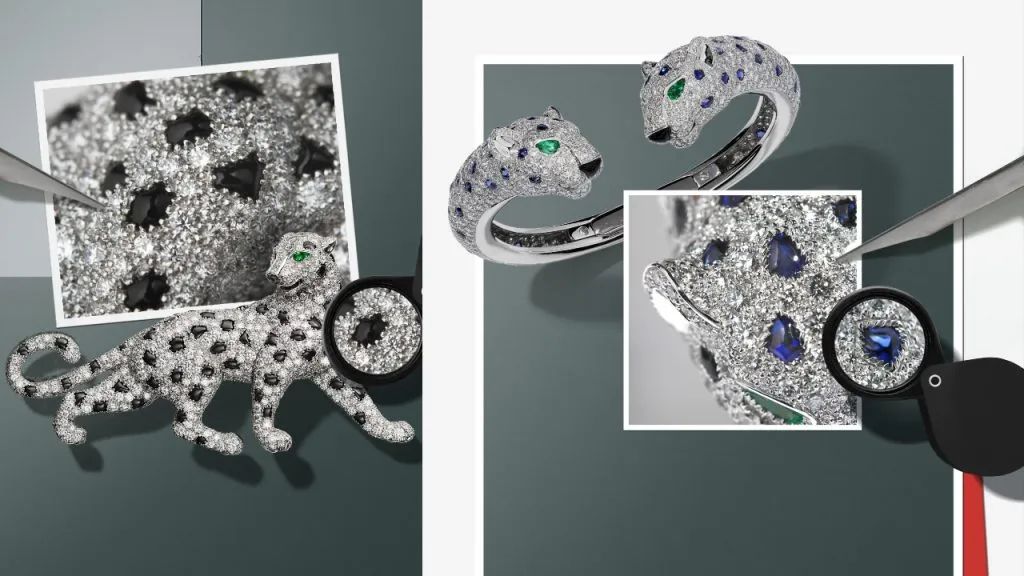
Cartier has also incorporated it into representative styles of various eras: Art Deco, architectural, Indian-inspired fruit clusters… all combined with the panther.


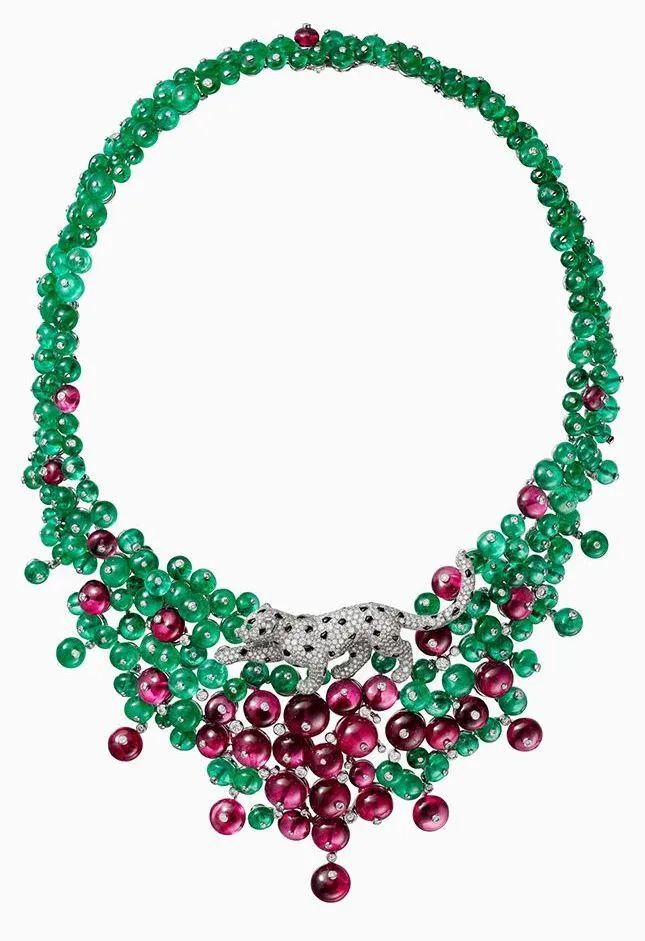
What’s more interesting is Cartier’s clever use of its partial features. Cute paws, fluffy tails, or even just a hint of leopard print can instantly make you appreciate the panther’s charm.
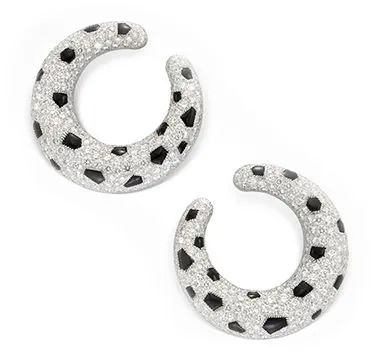
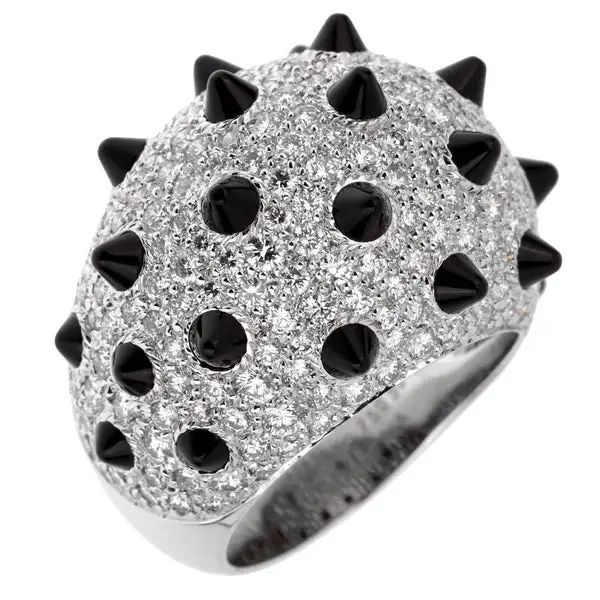
Panthère earrings and ring
Buccellati’s Butterfly: Continuity and Rebirth
Appealing to: ESFJ, ESFP
Buccellati, renowned for its goldsmithing, held “The Prince of Goldsmiths” exhibition during Haute Couture Week, showcasing the brand’s multi-generational gold craftsmanship. By juxtaposing old and new pieces, visitors could appreciate the past while admiring new creations, experiencing the brand’s century-long evolution.
The star of the exhibition was the brand’s spiritual totem—the butterfly. This delicate yet beautiful creature fully embodies the Buccellati family’s dedication to craftsmanship and continuity.
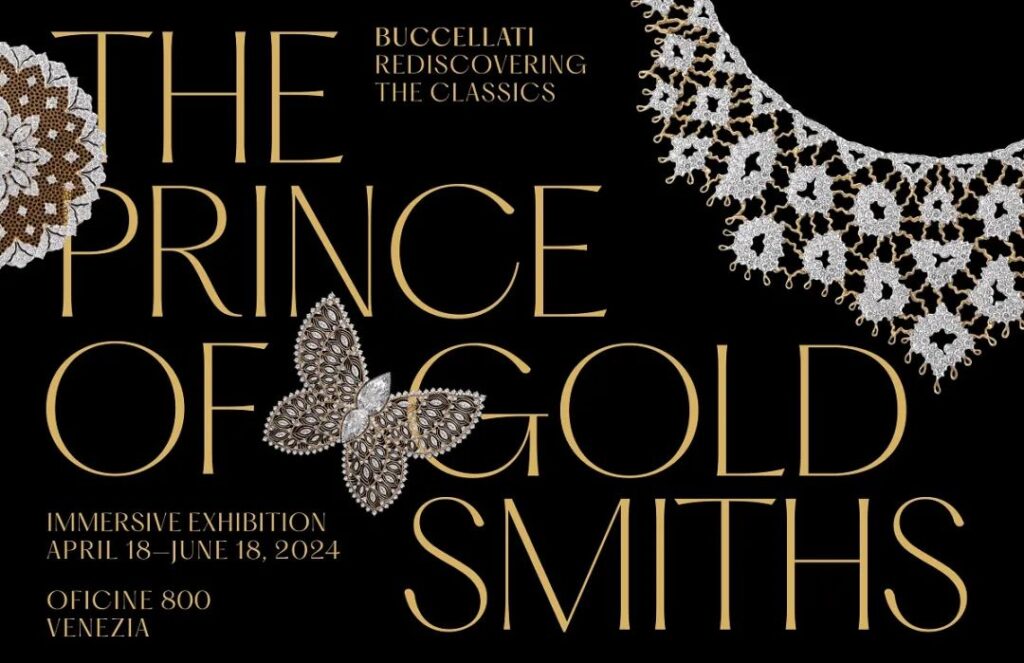
Particularly impressive were four butterfly brooches created by three generations of designers, offering a comprehensive view of Buccellati’s exquisite craftsmanship and evolving aesthetics. A butterfly brooch made by brand founder Mario Buccellati in the 1950s exudes a strong courtly style. Two baroque pearls form the delicate body, while the white gold wings feature intricate openwork. Rose-cut diamonds enhance transparency, resembling dewdrops.
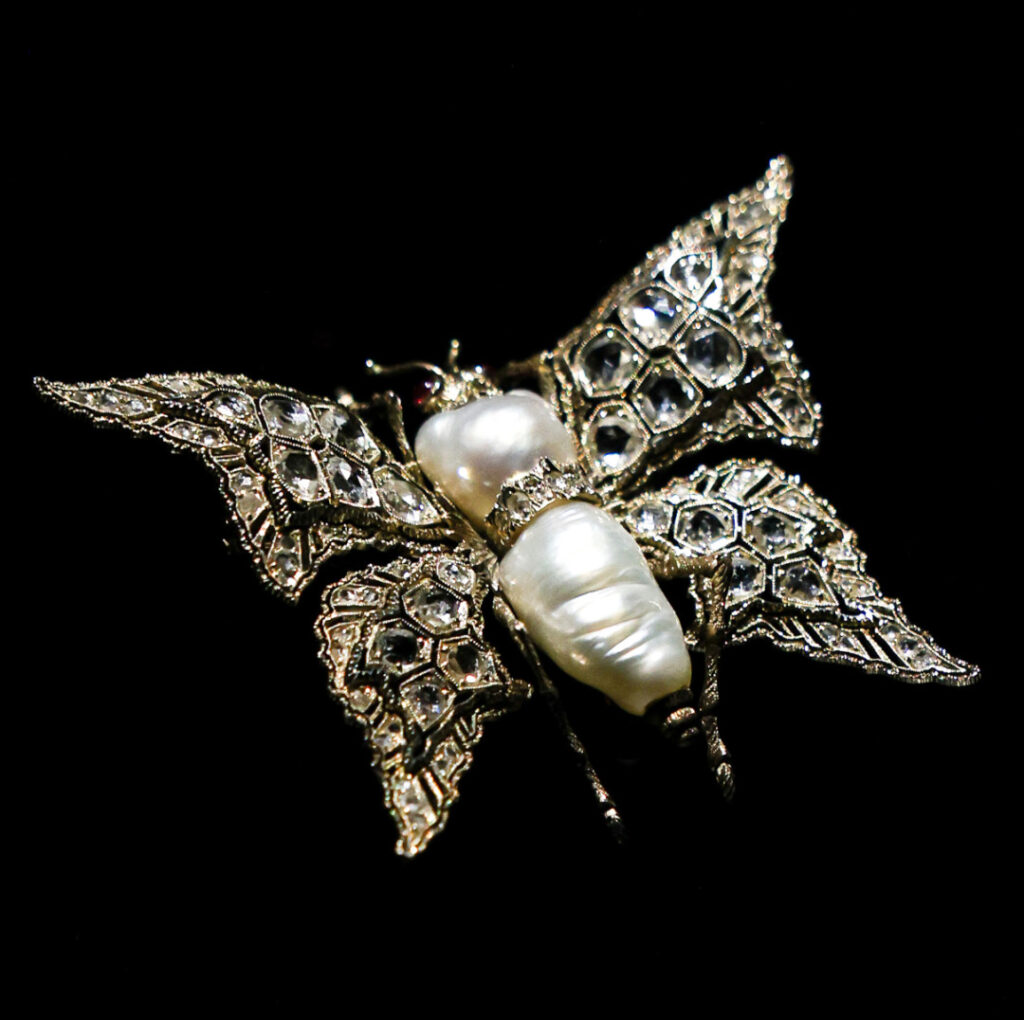
The second-generation Gianmaria Buccellati’s butterfly brooch, created in 1993, perfectly captures the 1970s’ love for color. He used the “Modellato” engraving technique to showcase gold’s rich variations and incorporated diamonds, emeralds, rubies, and pearls to create a dazzling sense of luxury.
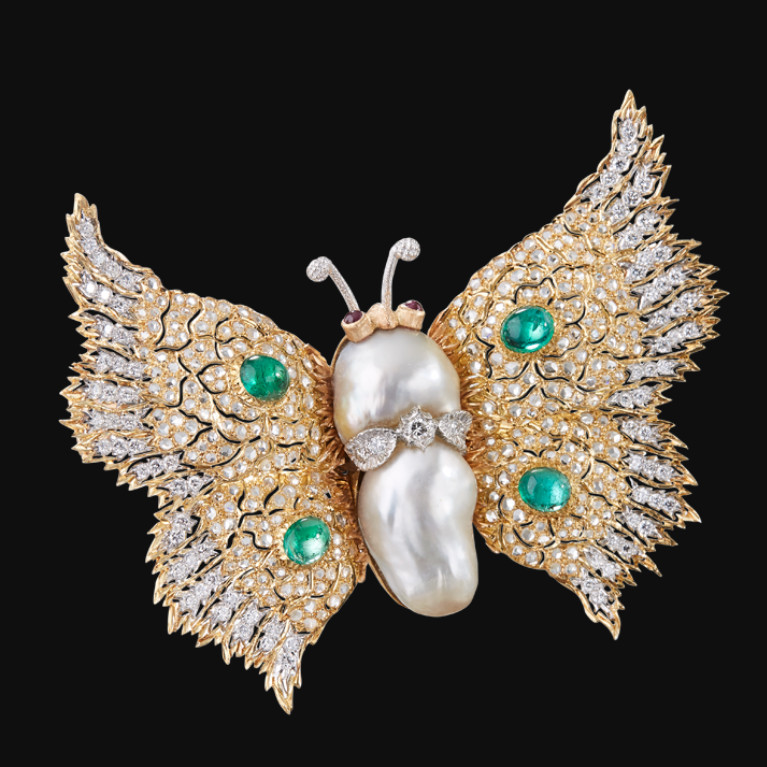
In the same year, Andrea Buccellati designed a butterfly brooch with a distinctly different style. This master, enamored with Renaissance art, created a more lifelike butterfly. Aesthetically, he focused more on balance and classicism. The gossamer wings made of gold are only accented with diamonds to emphasize their transparency. His butterfly may appear more elegant and understated compared to his father’s and brother’s courtly opulence.

In 2023, Andrea Buccellati and his daughter Lucrezia Buccellati jointly designed a butterfly brooch that emphasizes a more modern style. The butterfly’s body transformed from elegant pearls to brilliant diamonds, showing more edge and regularity.
The “Modellato” technique evolved from traditional honeycomb patterns to radiating sunburst patterns, with diamonds systematically arranged on top, creating a more three-dimensional and brilliant overall effect.
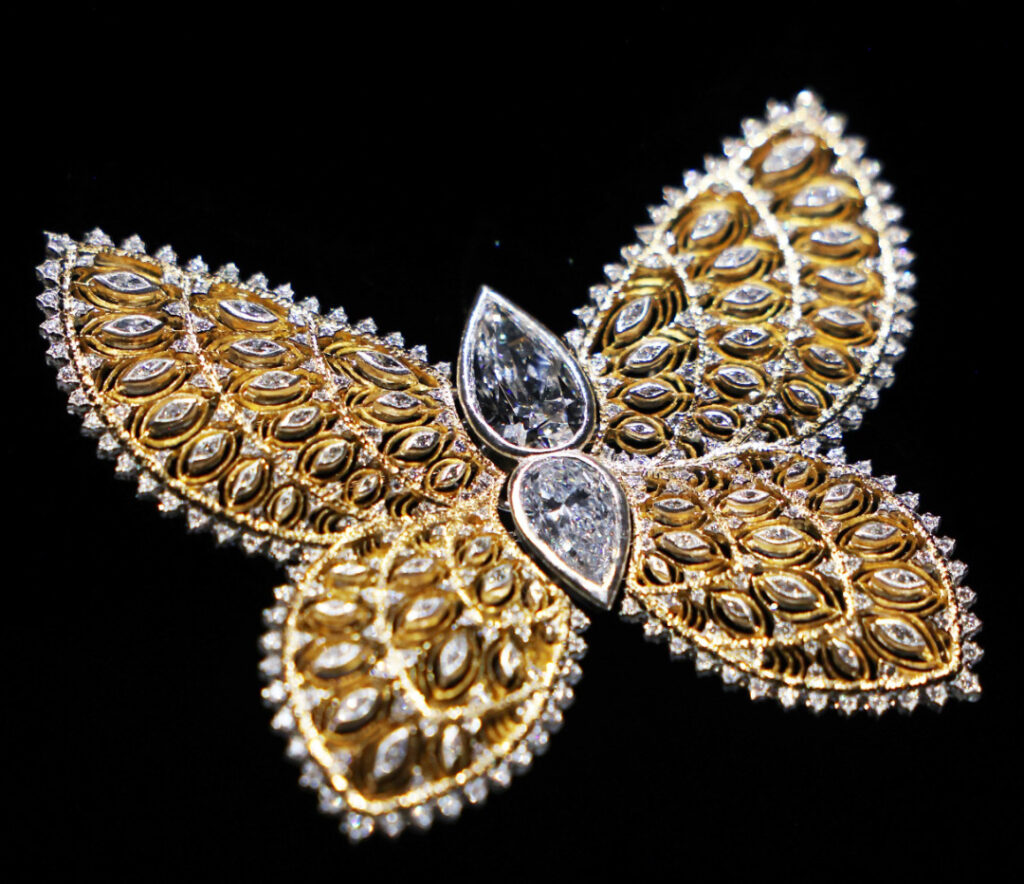
Chanel’s Lion: Protection
Appealing to: ENTJ, ESTJ
Mademoiselle Chanel’s love for lions is well-known. It’s not only her spiritual totem but also her lucky charm. Born under the Leo zodiac sign, she rediscovered her passion for creation and courage for life in Venice, a city guarded by lions, after losing her lover. Thus, she had a special affinity for lions and firmly believed in the protective power of the king of beasts.
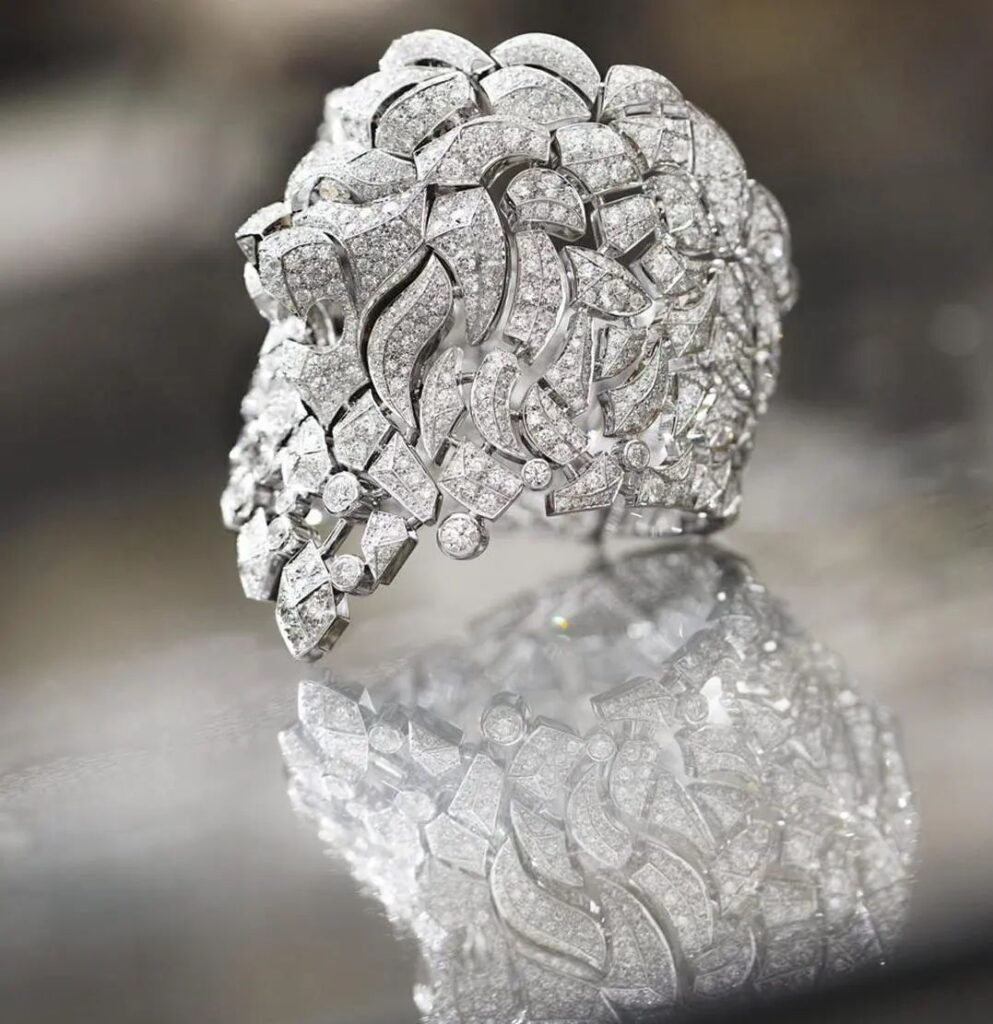
Sous le Signe du Lion Fine Jewelry Collection
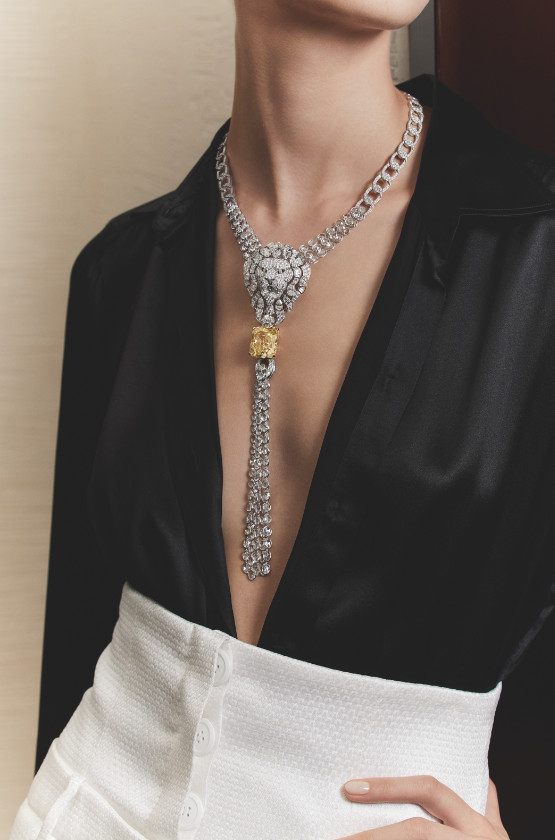
L’Esprit du Lion Fine Jewelry Collection
Chanel’s high jewelry originated from Coco Chanel’s nonconformity. This fashion pioneer was always a “rebel” against tradition, championing ideas that went against the mainstream.
Consider this: when women pursued curves, she advocated for body liberation, using men’s tweed and athletic knit fabrics for loose-fitting women’s wear. When white dominated high society, she introduced the little black dress. When everyone wore jewelry, she launched faux pearl necklaces. But when the jewelry industry was struggling post-war, she introduced her first high jewelry collection.

L’Esprit du Lion Fine Jewelry Collection
Therefore, Chanel’s lion has always represented individuality. It protects every independent woman who dares to break tradition, giving them courage. You can see its majestic presence in the jewelry, and whenever it appears, it’s always the star of the show.
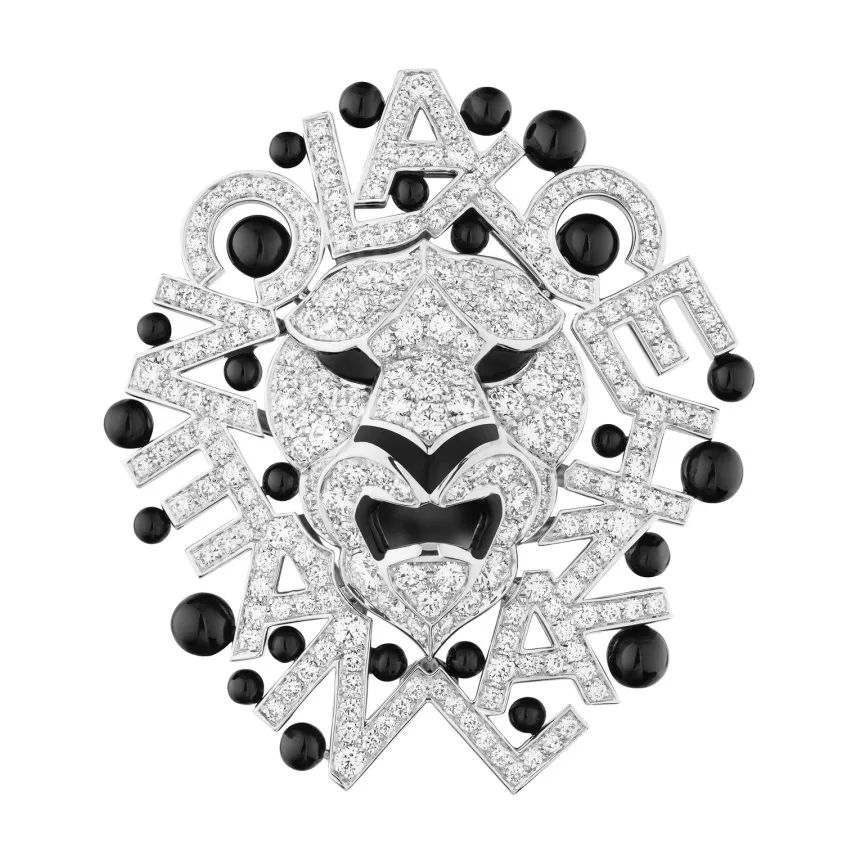
Sport Fine Jewelry Collection
Print Lion Brooch

L’Esprit du Lion Fine Jewelry Collection Bracelet
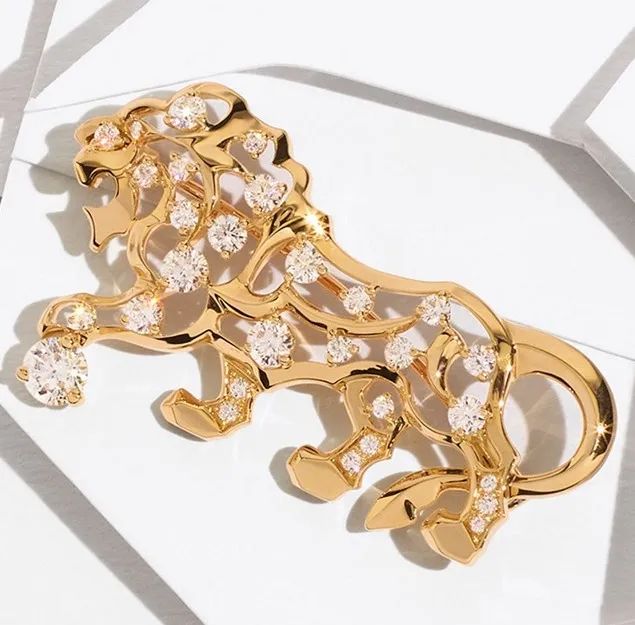
Icon 1932 High Jewelry Collection Brooch
Boucheron’s Wladimir: Companionship
Appealing to: ESFJ, ENFP
Among all the animal-inspired spiritual totems, Boucheron’s Wladimir is particularly special because it represents a cherished pet. This black long-haired cat named Wladimir was the beloved companion of Gérard Boucheron, son of brand founder Frédéric Boucheron. Wladimir accompanied this jewelry master throughout his entire creative process.
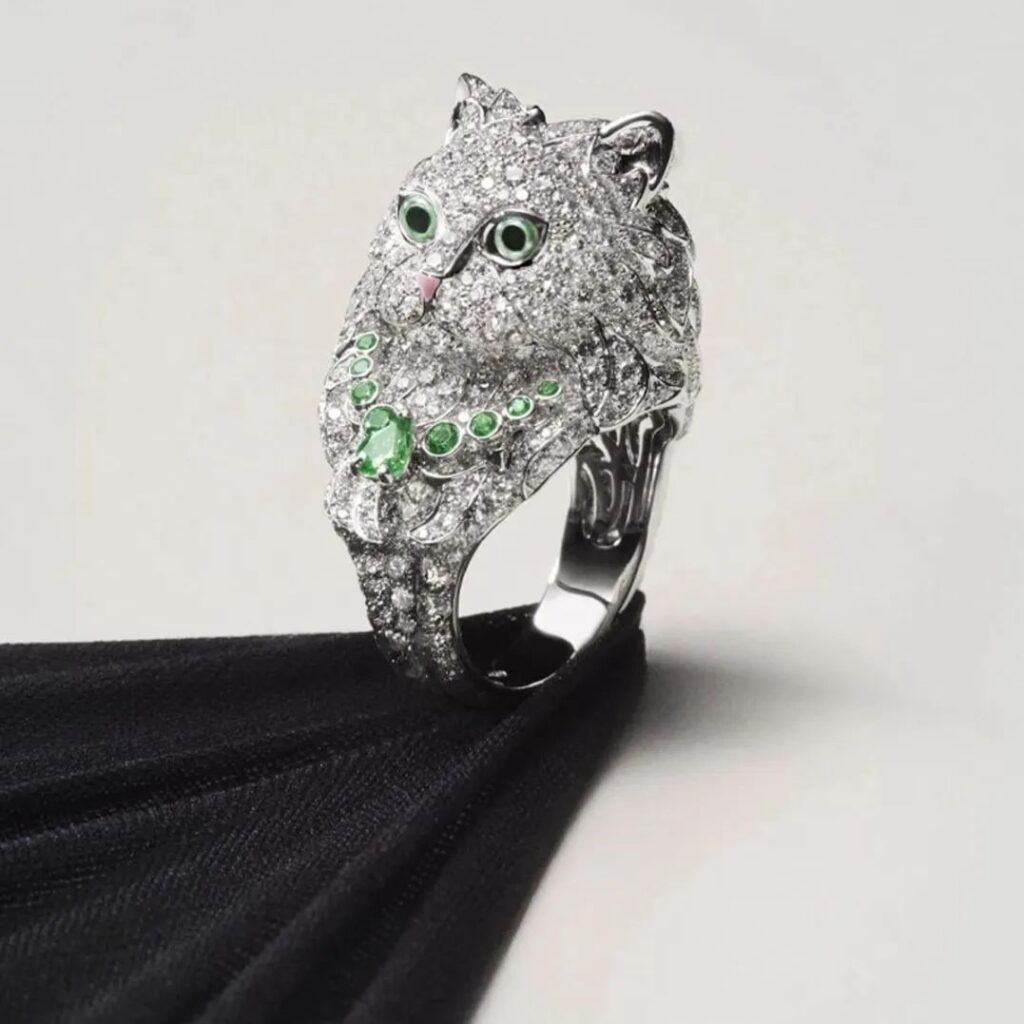
Wladimir Collection Ring
Wladimir was not just the inspiration for Boucheron’s owner; he also played the roles of advertising model and customer favorite. In 1981, he appeared in the brand’s jewelry advertisement wearing the Collier Fleurs necklace. He was also a regular presence at the brand’s Place Vendôme boutique, providing companionship to customers.

Therefore, Wladimir easily became the protagonist of jewelry creations, given his “popular appeal,” successfully occupying the central position in Boucheron’s animal series and gaining numerous fans.
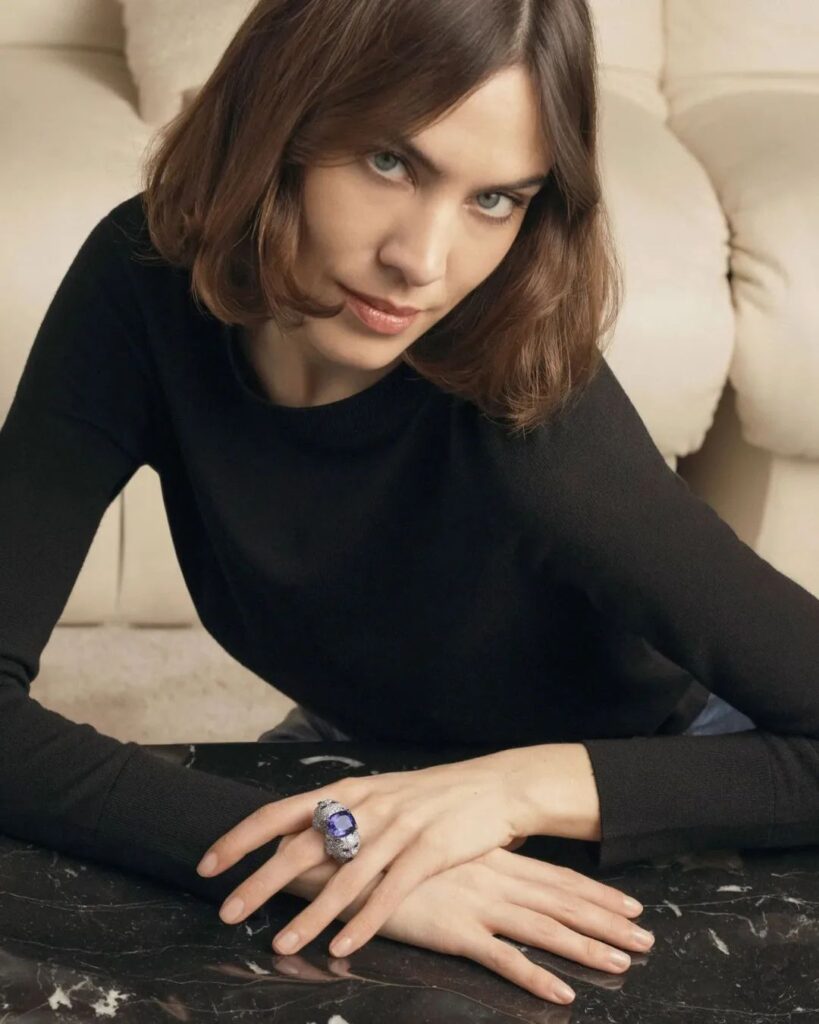
Wladimir Collection Ring
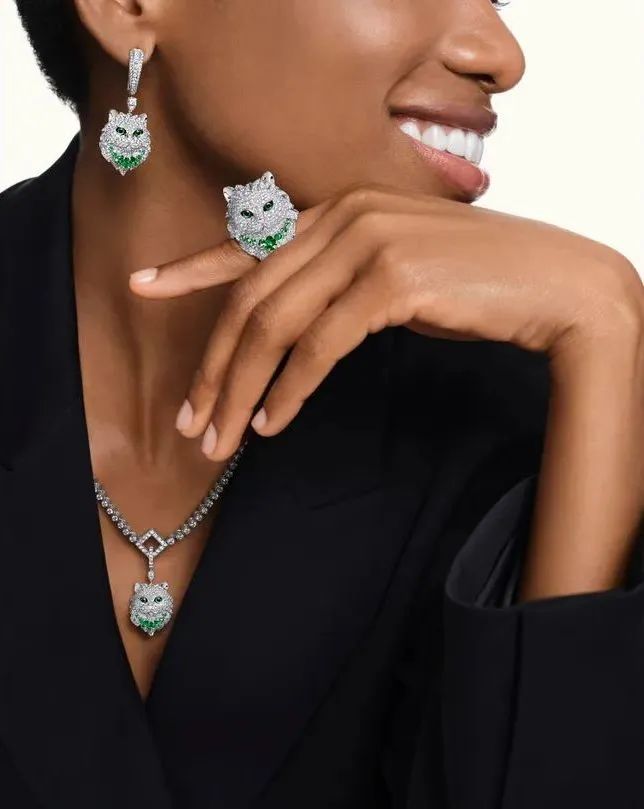
Wladimir Collection
I-type personalities, or introverts, tend to enjoy solitude and prefer self-reflection and independent thinking. These more reserved individuals are more inclined towards plant-based spiritual totems, emphasizing inner strength. They are more likely to appreciate quiet beauty.
It’s not that they lack vitality, but rather that their strength is subdued. When choosing jewelry, plant-based design elements better align with their soul’s aura.
Van Cleef & Arpels’ Four-Leaf Clover: Poetic
Appealing to: INFP, INTJ
Van Cleef & Arpels is a very artistic jewelry brand. Their iconic ballerina and fairy collections, which originate from literary creations and ballet art, need no introduction. But their poetic nature lies in their ability to capture beauty in ordinary details, the most representative of which is the brand’s spiritual totem—the four-leaf clover.
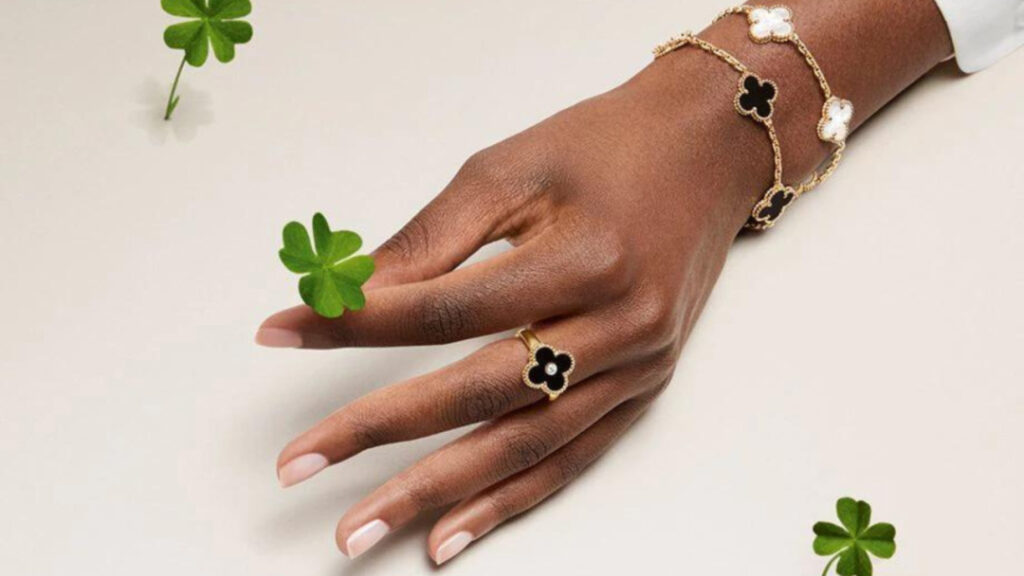
The four-leaf clover is actually a variation of the common wild three-leaf clover. Most plants in the Trifolium genus have three leaves. However, according to botanists, only about one in 5,000 clovers has four leaves, which is why it evolved into a symbol of luck due to its rarity. But in essence, its appearance is truly unremarkable.
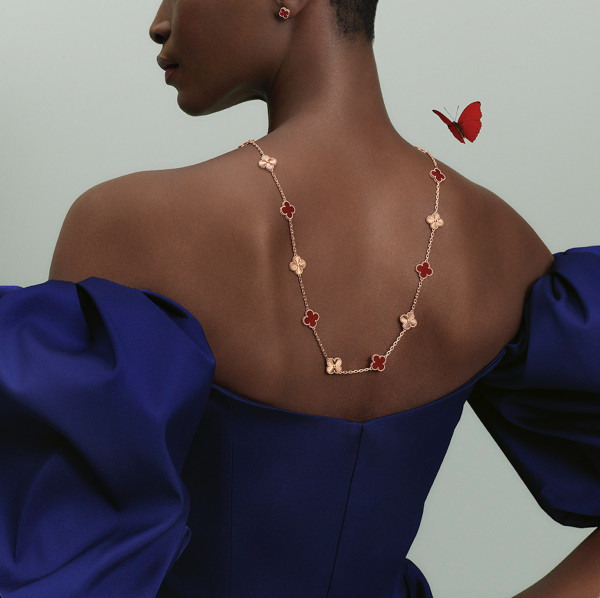
Only Van Cleef & Arpels discovered its beauty. In 1968, Jacques Arpels, who was particularly fond of “metaphysics,” liked to gift four-leaf clovers found in his garden to employees. His motto was “To be lucky, you have to believe in luck.” Eventually, perhaps tired of searching for four-leaf clovers, he introduced this concept into jewelry, launching the Alhambra series, hoping to bring this luck to more people.

Long necklaces and bracelets composed of four-leaf clovers quickly became popular worldwide because this simple yet exquisite design was very versatile, perfectly suited for the 1970s era that emphasized relaxation and free-style matching.
It became a must-have choice for fashion icons and has remained popular to this day. Van Cleef & Arpels quickly introduced various color and material combinations to satisfy customers seeking individuality.

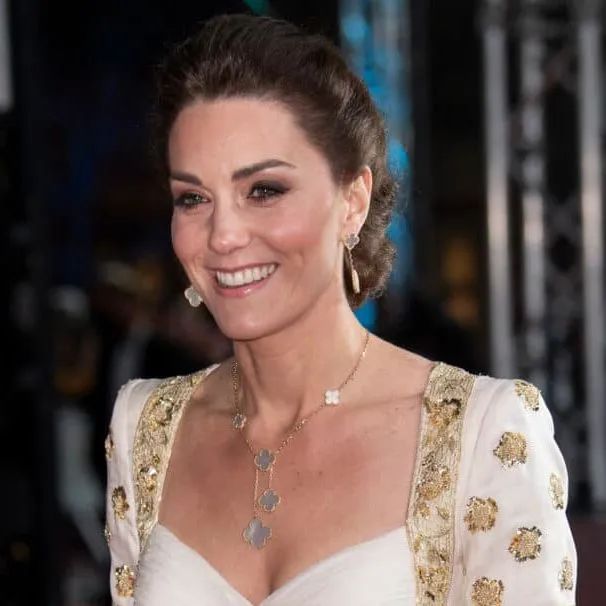
Chaumet’s Wheat: Abundance
Appealing to: INFJ, ISFJ
What’s the first thing you think of when Chaumet is mentioned? Joséphine? Bees? Indeed, this royal jeweler, closely associated with the French Bonaparte dynasty, has always been paying homage to its glorious past. But in fact, its more classic brand imprint is the tiara, as the French court led by Napoleon was obsessed with tiaras.
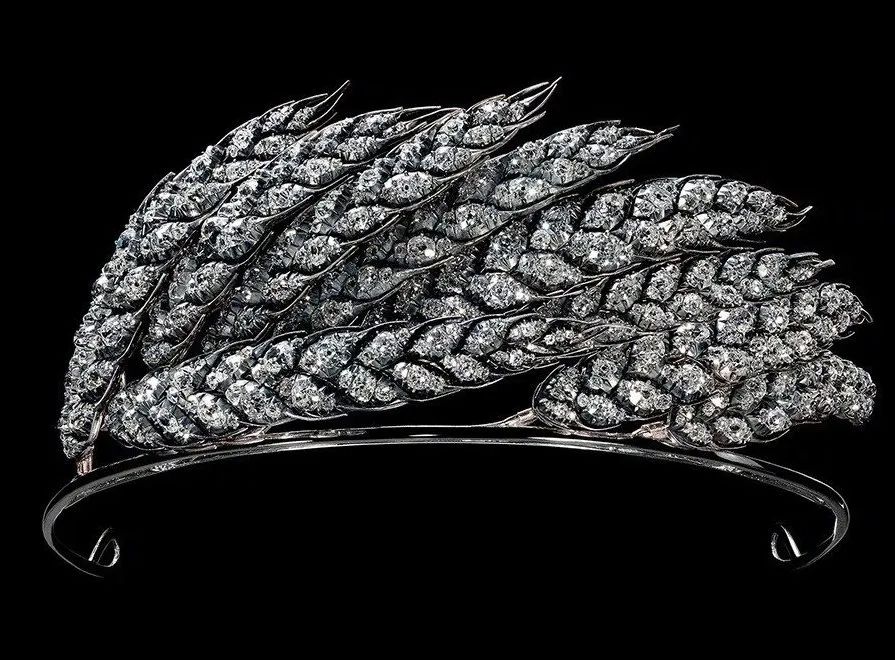
Wheat Tiara
The most famous and trendsetting piece from Chaumet at the time was the wheat tiara designed and crafted by the brand’s founder, Monsieur Nitot. Since the times of Homer’s epics, wheat has been a symbol of civilization. In Greek and Roman mythology, wheat represents the goddess of harvest, and people believed she would bring harvest and prosperity to the land.
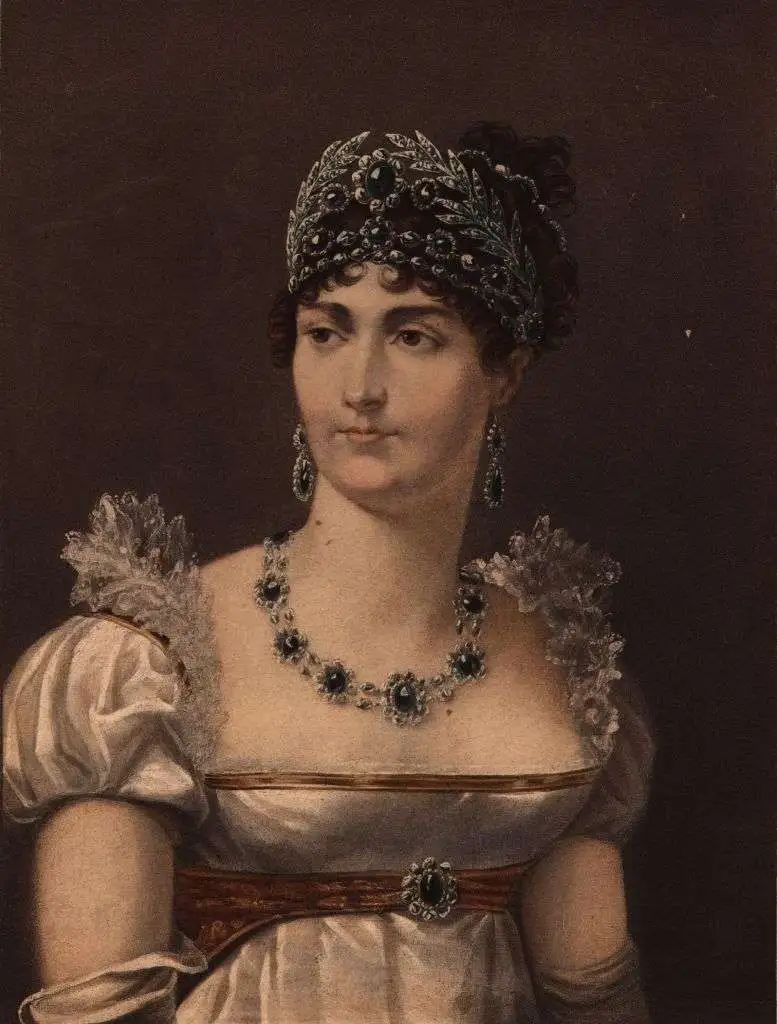
Thus, Monsieur Nitot created a tiara inspired by wheat for Empress Joséphine, introducing a new element to high jewelry that quickly spread throughout European high society during the Empire era. Wheat naturally became Chaumet’s spiritual totem.
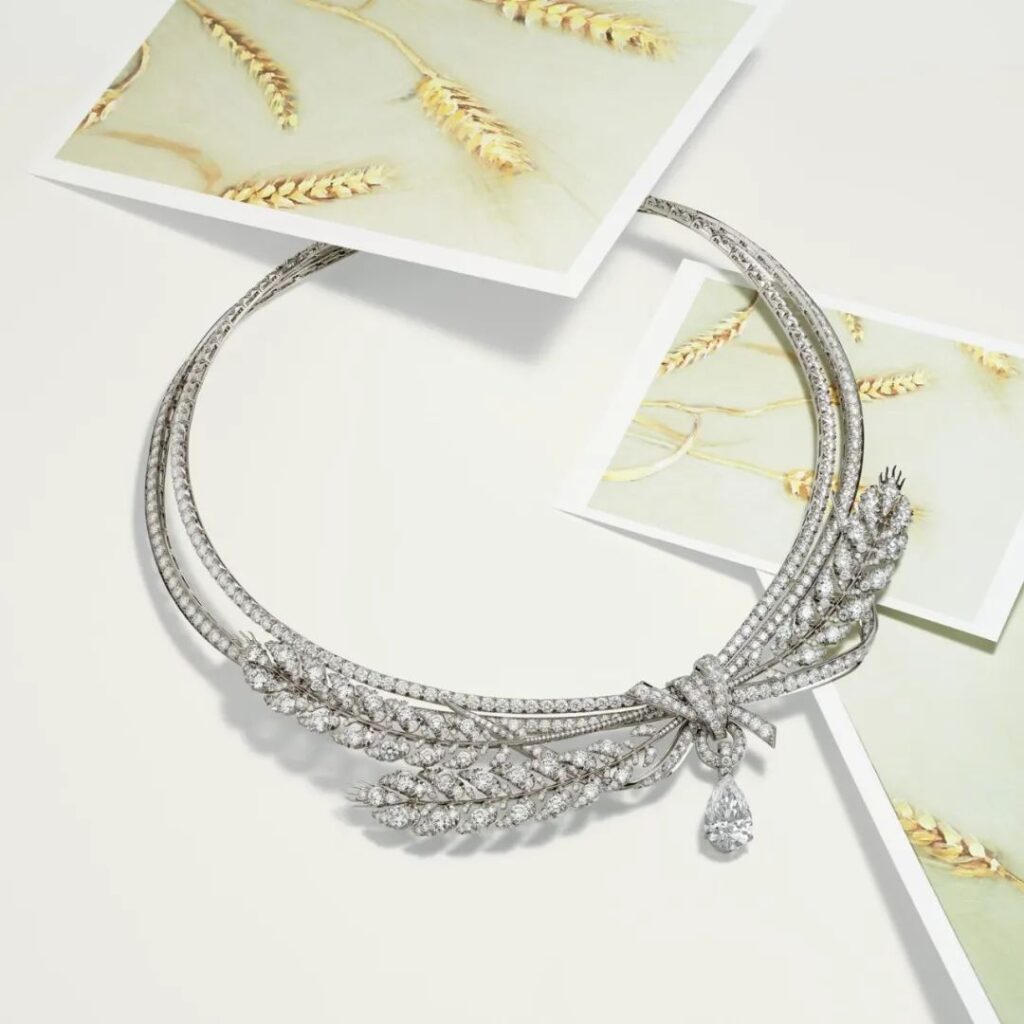
La Nature High Jewelry Collection
Offrandes d’ete Diamond Necklace
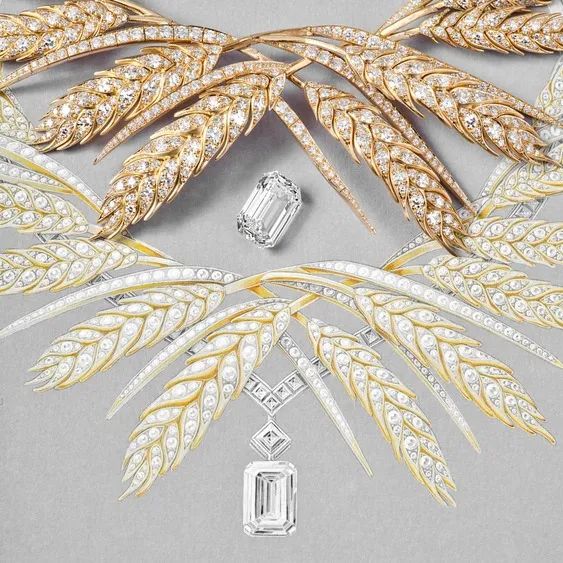
Le Jardin High Jewelry Collection
Blé Necklace

Le Jardin High Jewelry Collection
Blé Tiara
Chaumet has repeatedly showcased new designs featuring wheat in its high jewelry collections and extended it to their Everyday Jewelry series. Although brands like Chanel and Boucheron have also created wheat-inspired jewelry, Chaumet has undoubtedly mastered this spiritual totem, with their wheat jewelry appearing more full, radiant, and abundant.
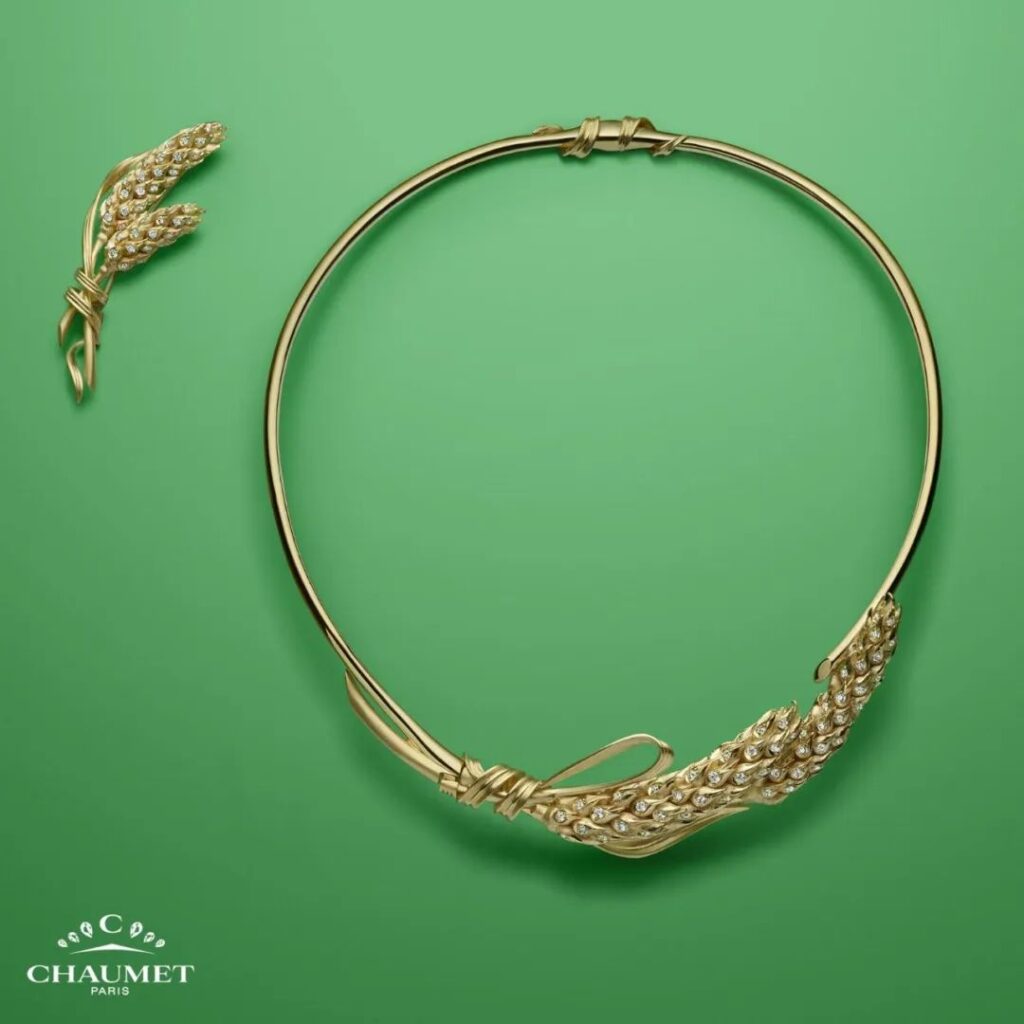
Tiffany’s Victoria Collection: Evergreen
Appealing to: ISTJ, ISTP
Tiffany & Co. also has its own plant-based totem, the Victoria collection inspired by vines. This collection stands out among Tiffany’s jewelry offerings because, in a place where jewelry masters gather, distinctive styles are essential to lead trends. However, the Victoria collection is quite the opposite – it’s subtle and elegant, possessing a quiet classical beauty.
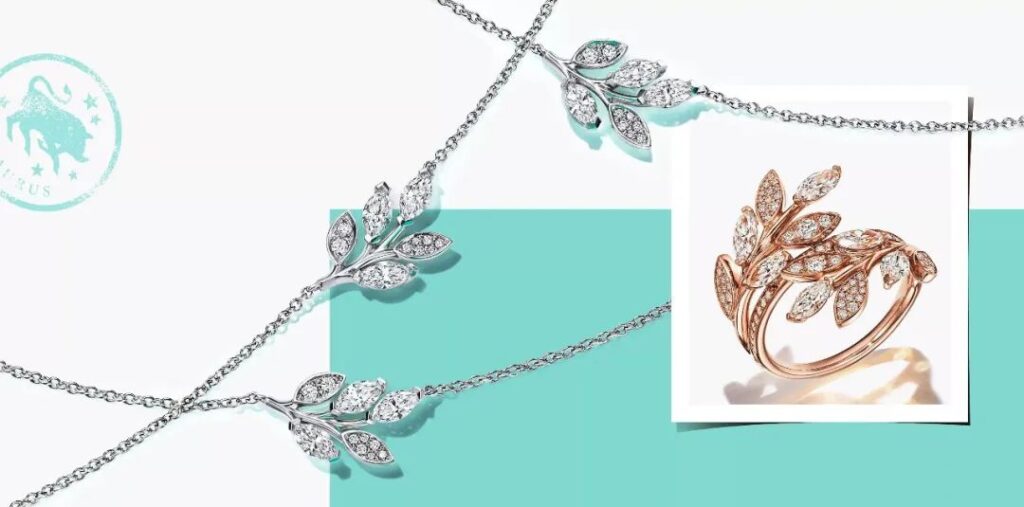
When you see it, you’re reminded of the gooseberry leaf brooches and ivy tiaras popular in the Victorian era. While it may not have the vibrant fragrance of fresh flowers, it carries the vitality of evergreen foliage.
That’s why the Victoria collection has always been present and frequently updated. Although it may seem understated compared to the T series and HardWear series favored by modern young people, this elegant and subtle collection, like vines, quietly maintains its vitality over time.
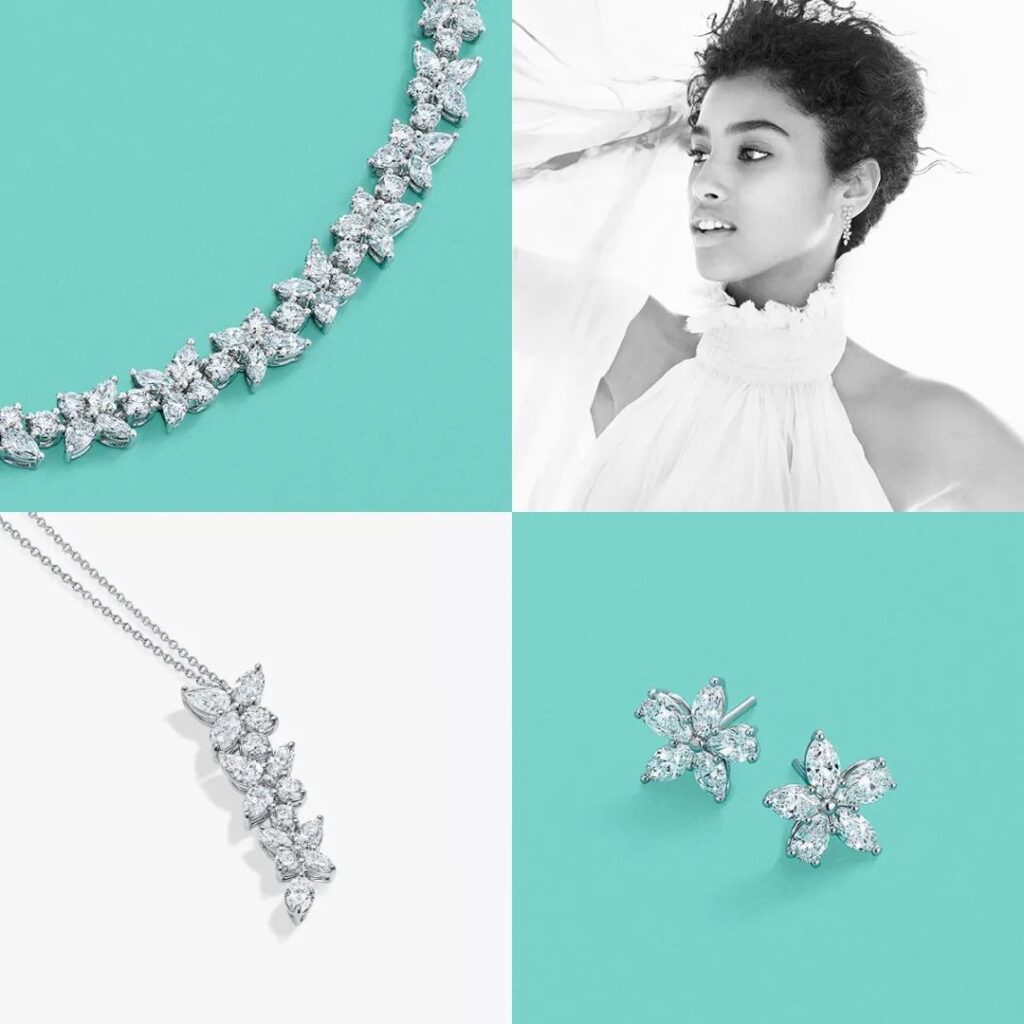
Victoria Collection
It can be composed of brilliant marquise-cut diamonds, dazzling yet artistic; it can feature pavé diamonds shimmering against mirrored metal, combining softness with strength; it can also be combined with the classic Key series, creating a collision of inherited classics.
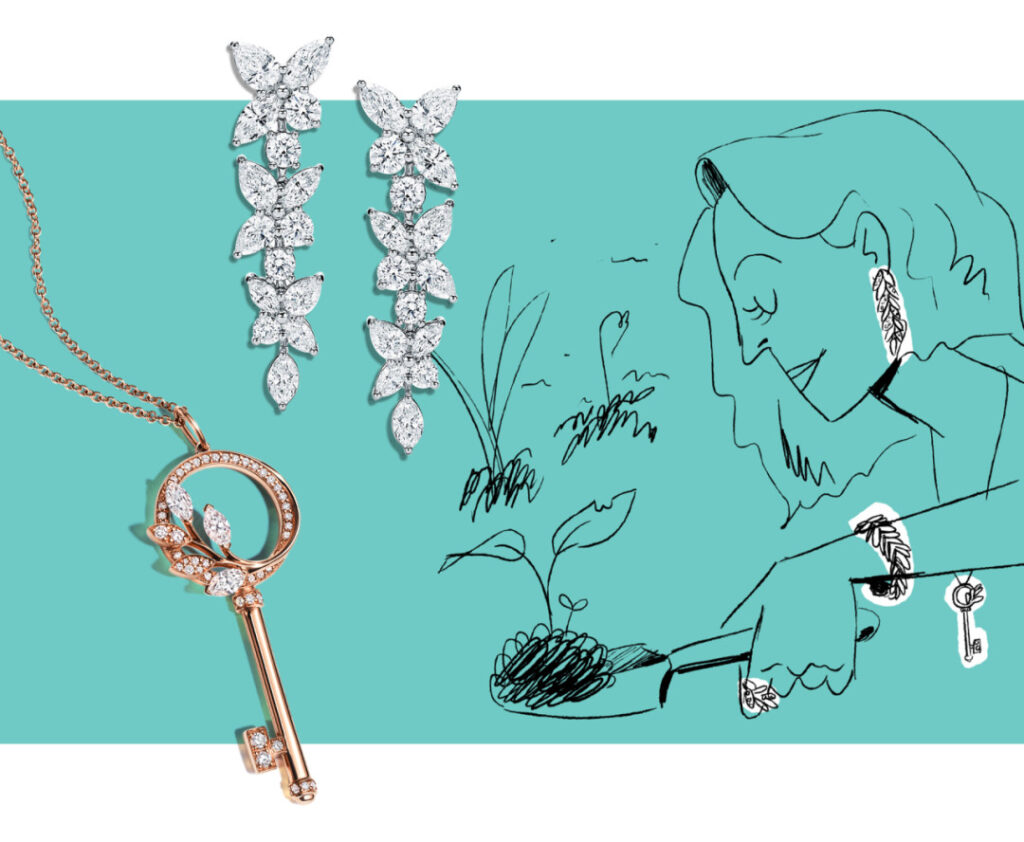
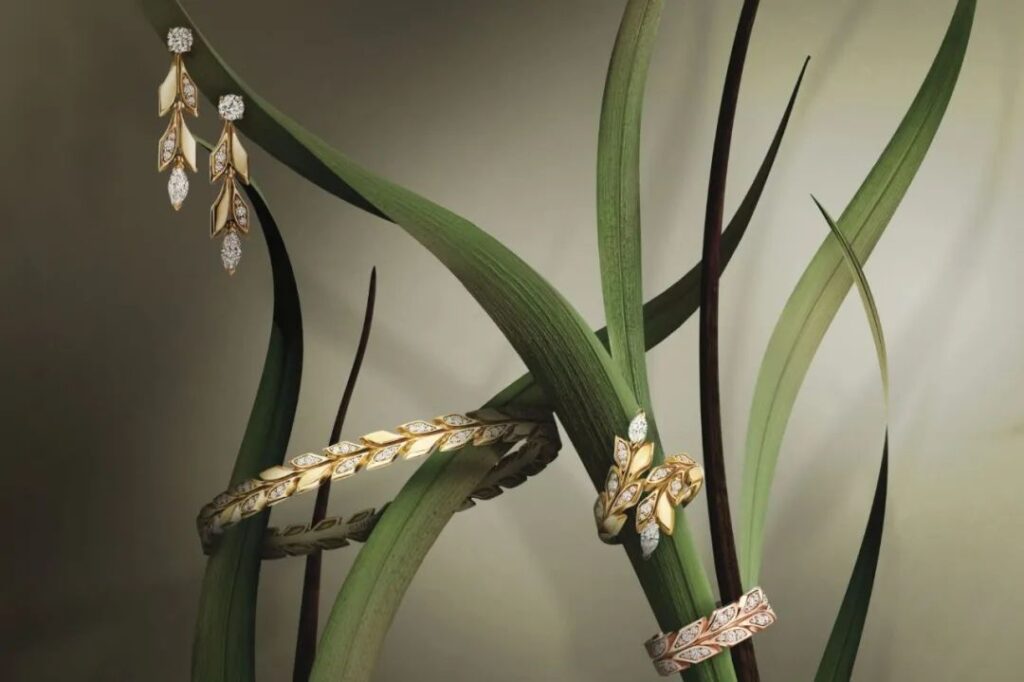
Victoria Collection
Dior’s Rose: Elegance
Appealing to: INTP, ISFP
Dior’s rose is undoubtedly a familiar plant-based spiritual totem, and it’s a piece of jewelry that every woman finds hard to resist. After all, from its design to its symbolism, who can refuse a dazzling rose that never withers?
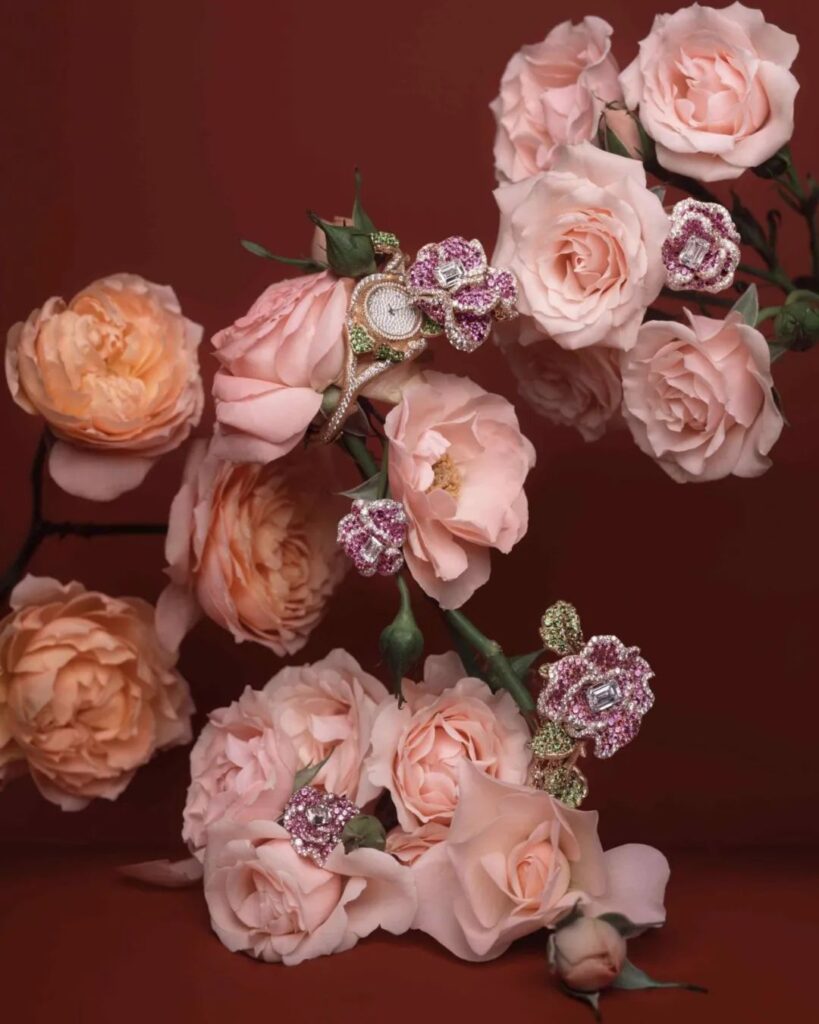
Since 2000, Dior Joaillerie’s Creative Director Victoire de Castellane has been creating a “rose garden” in tribute to Monsieur Dior, hoping to transcend time and space with roses of various styles to rival the rose garden once located in Granville, Normandy.
The roses were Monsieur Dior’s source of inspiration, and now this blooming “rose garden” has become the desire of all jewelry collectors.
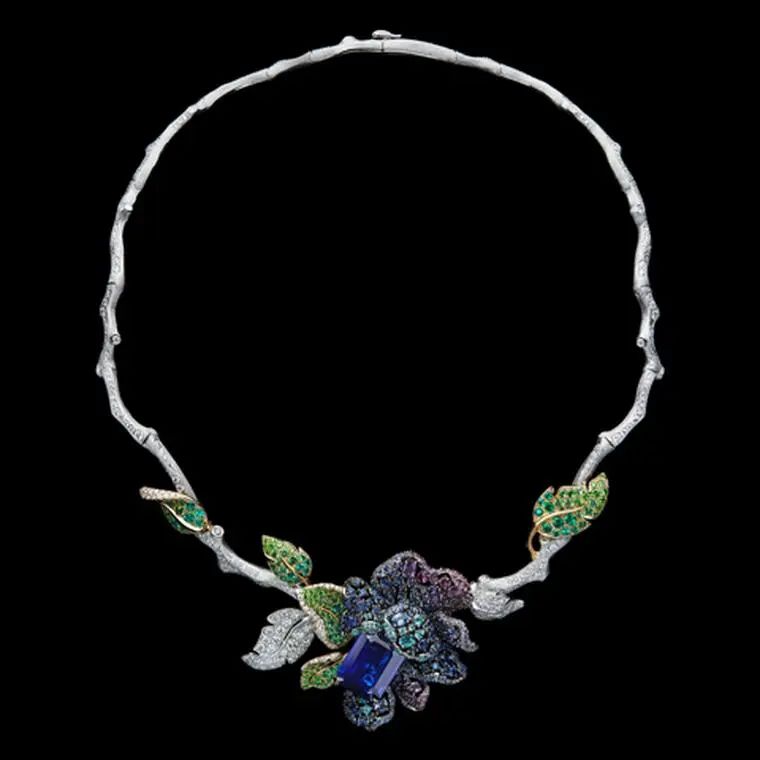

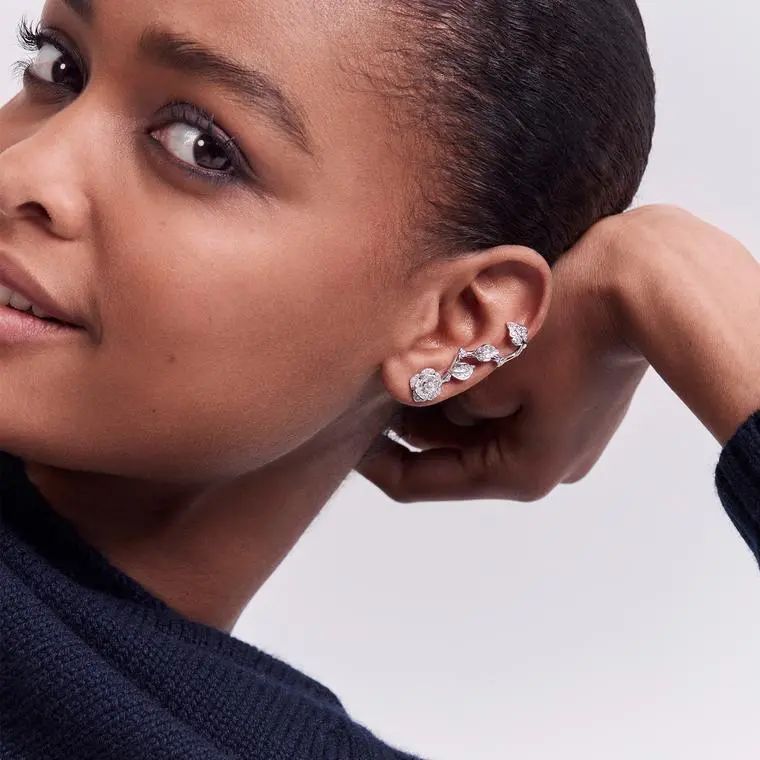
Indeed, this rose representing Dior’s aesthetics may not primarily emphasize love, sweetness, charm, or romance, but rather timeless elegance, which is also the foundation and spirit of the Dior brand. Therefore, in Victoire de Castellane’s jewelry world, every rose, regardless of style or material, always presents the spirit of elegance despite its many variations.
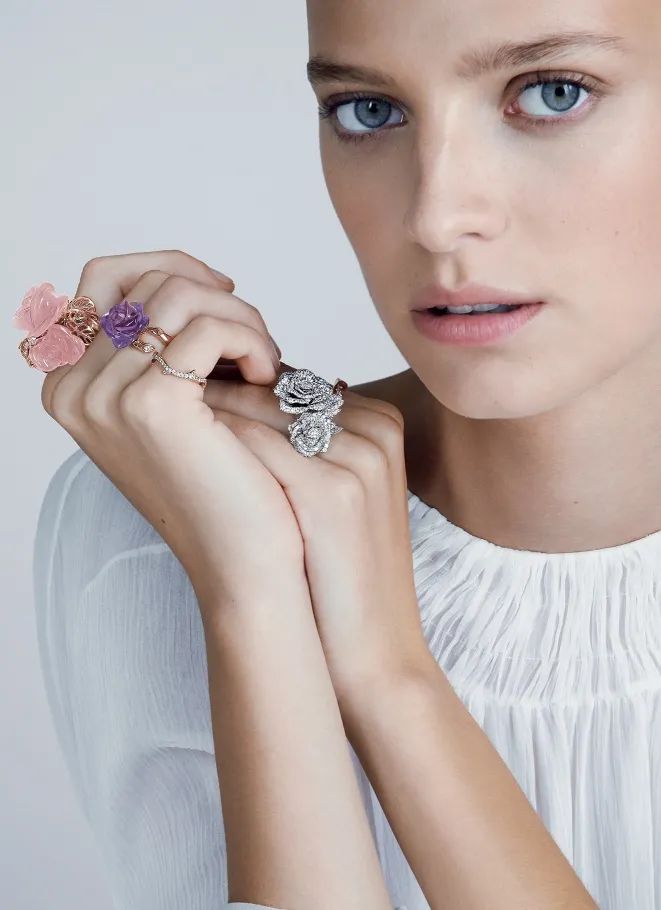
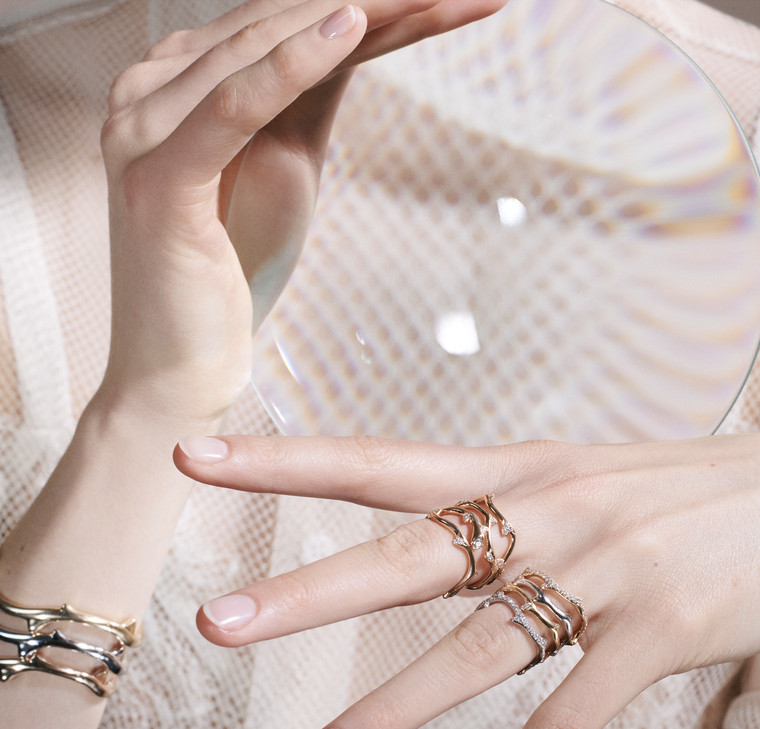
These luxury jewelry brands have maintained their spiritual totems for several generations, thoroughly researching both aesthetic design and craftsmanship styles. As a result, these often become their classic collections. You know what this means – plenty of choices! So, if you haven’t found the spiritual totem that best suits you yet, take your time to choose carefully and aim to add it to your collection soon!
Animal vs. Plant: Which Jewelry Totem Speaks to Your Soul? Discover the Spiritual Icons of Luxury Brands
Tweet
